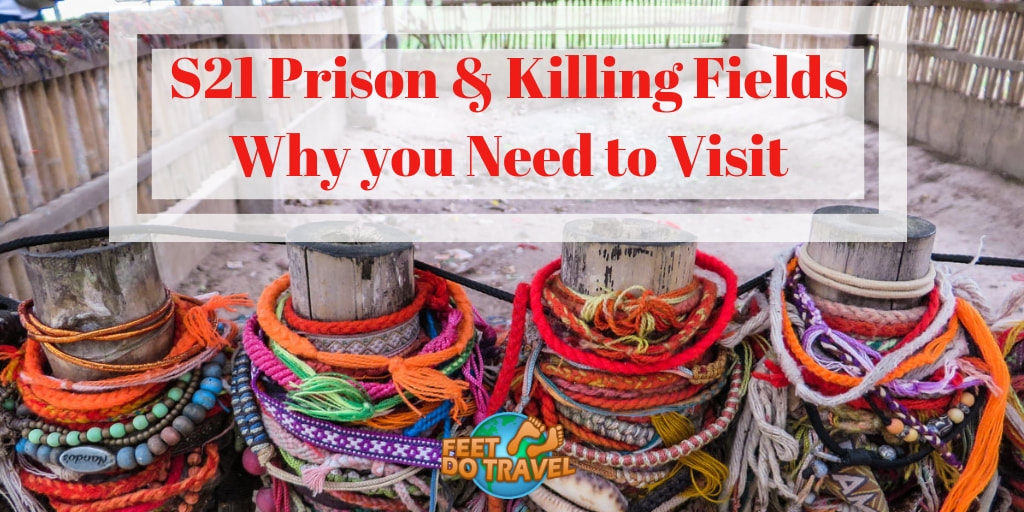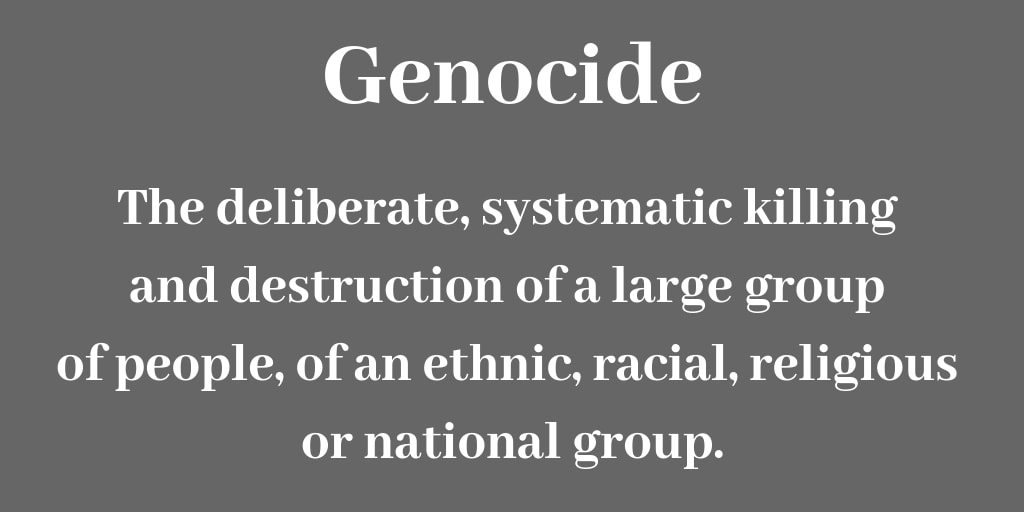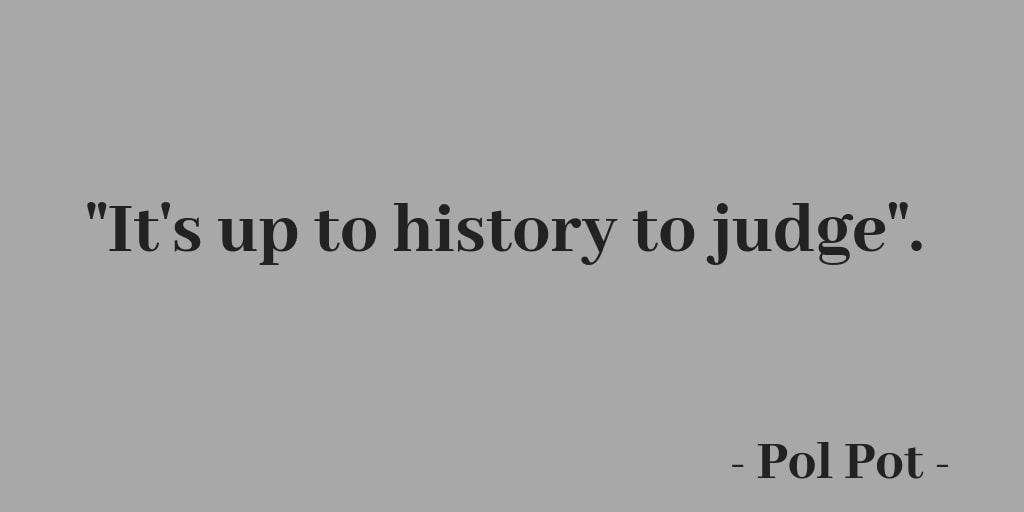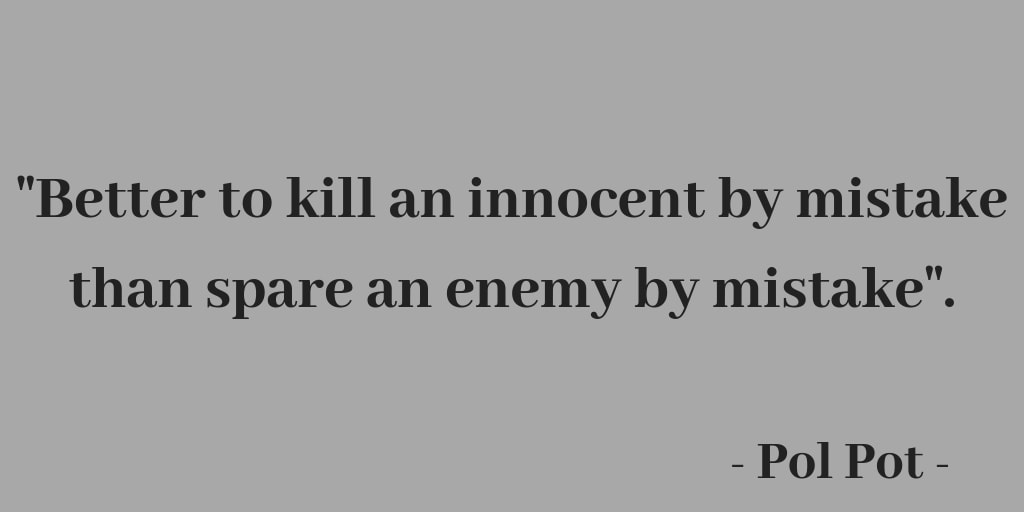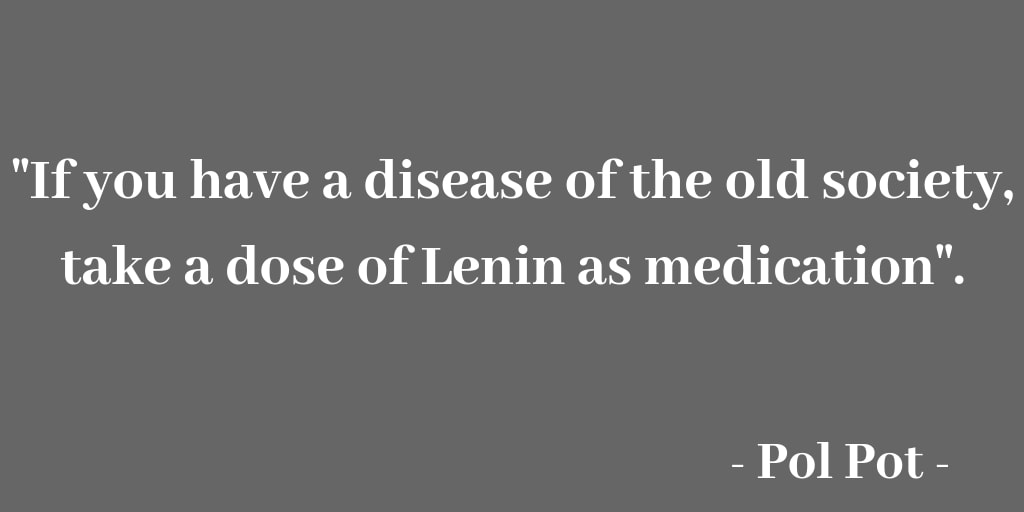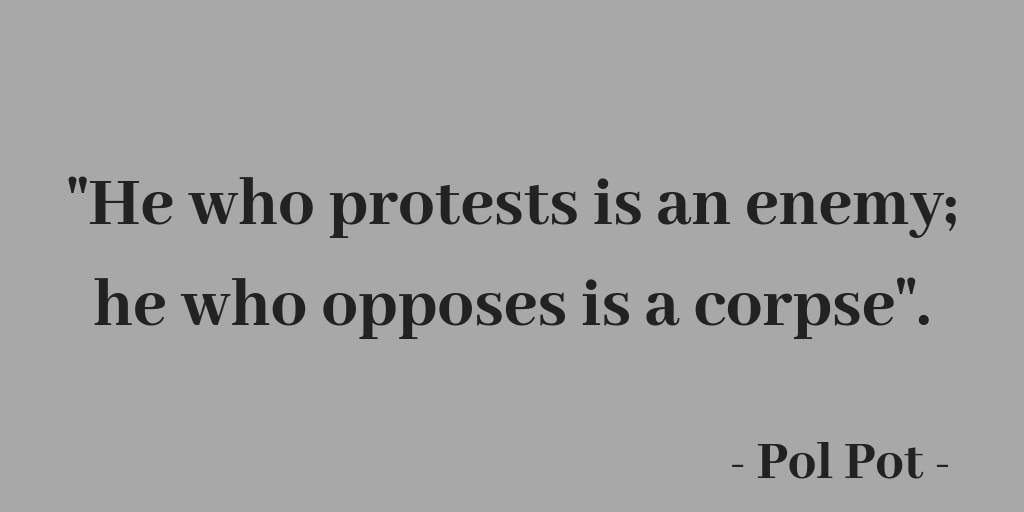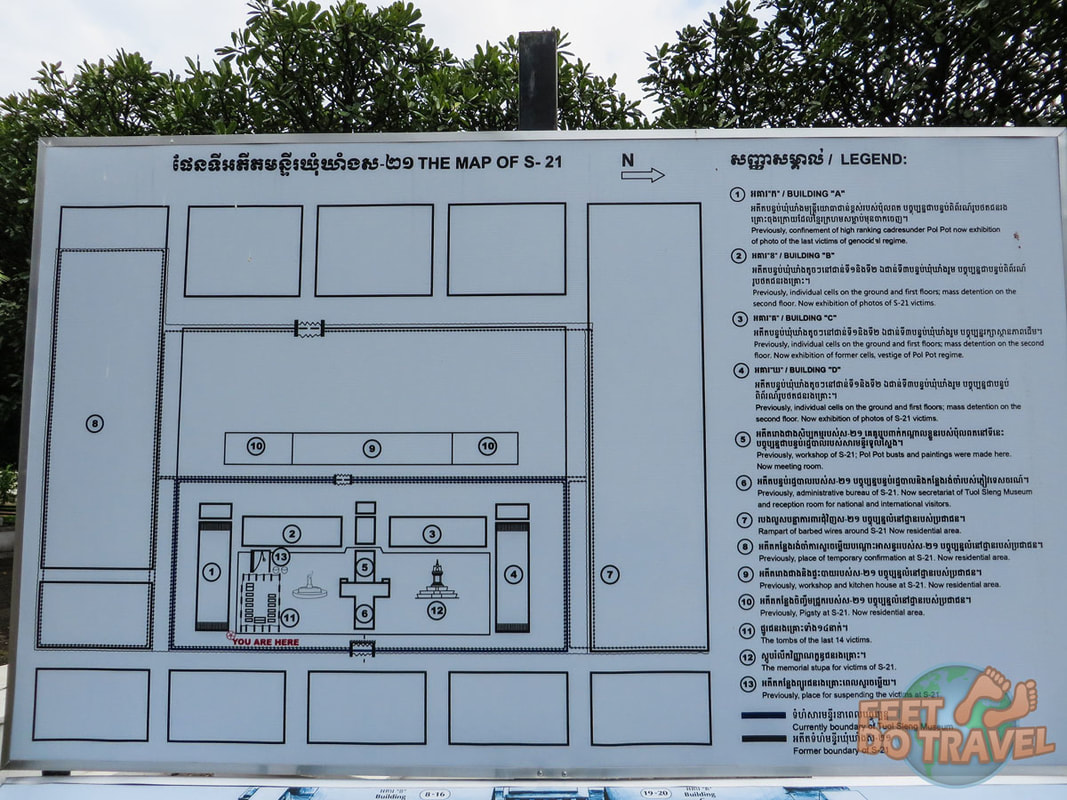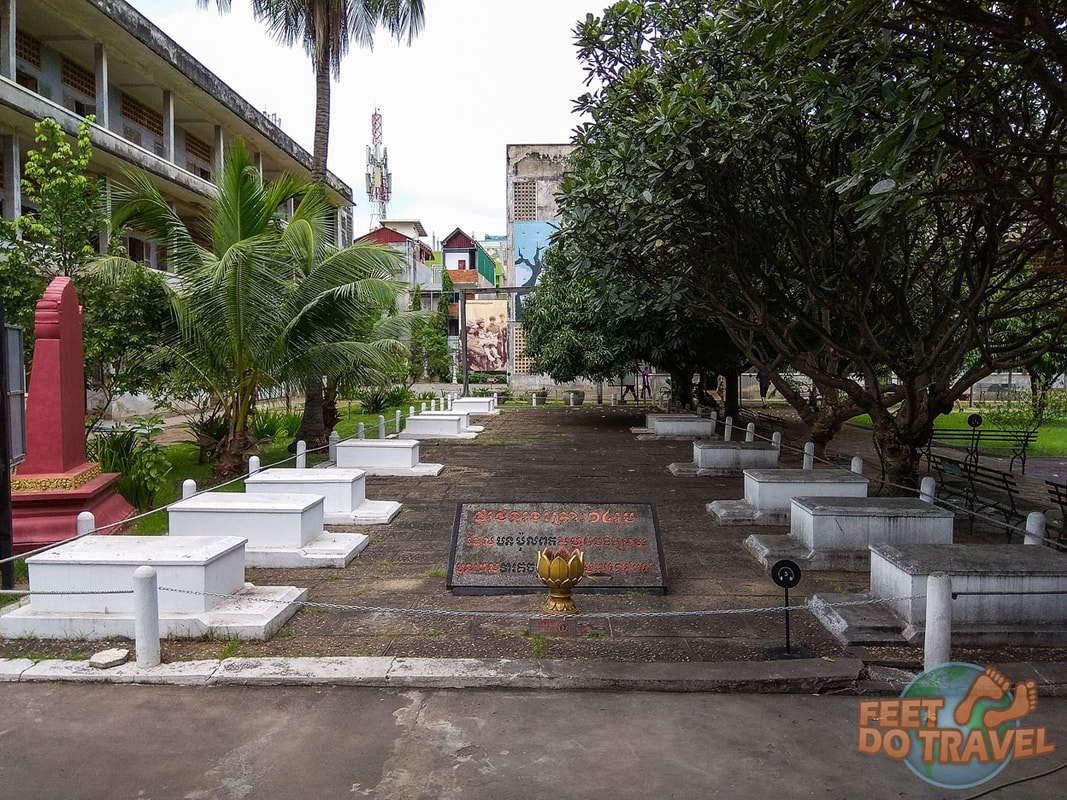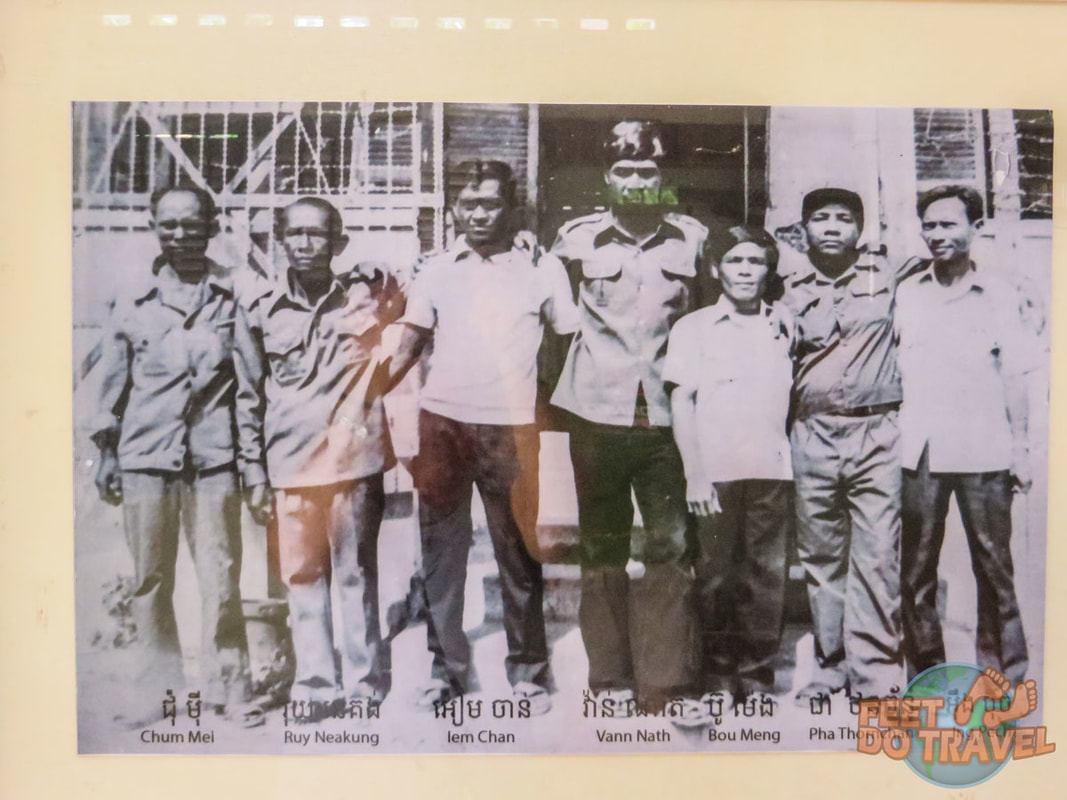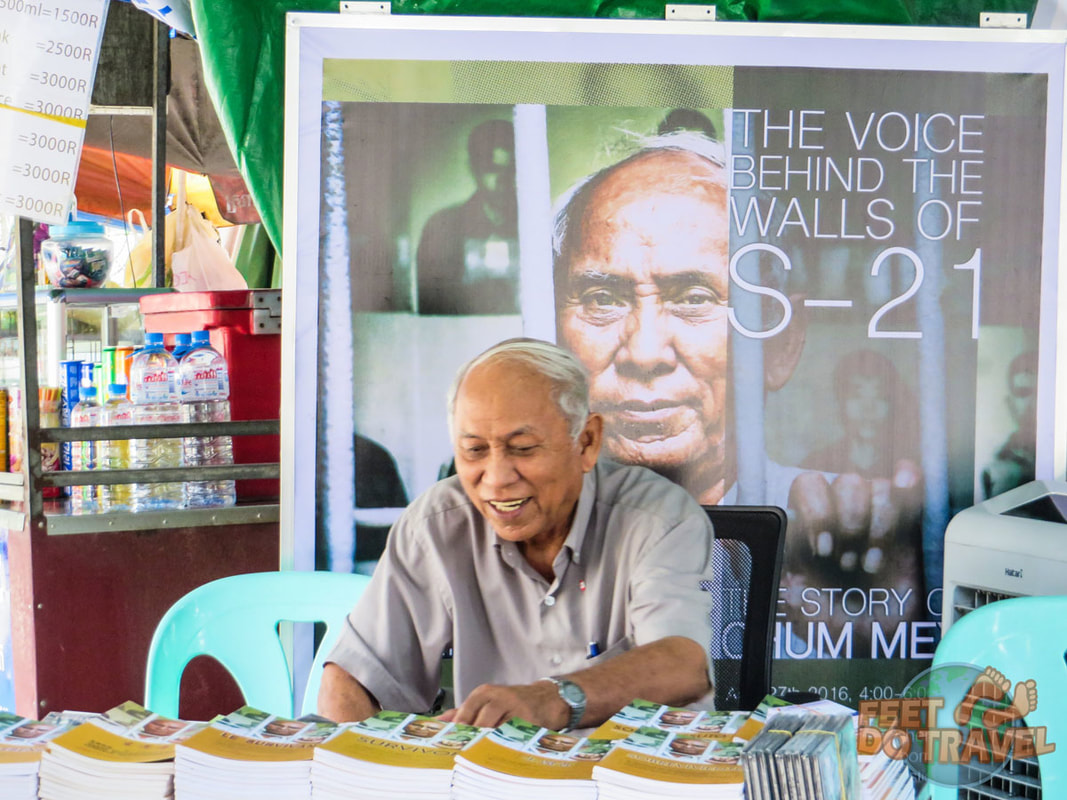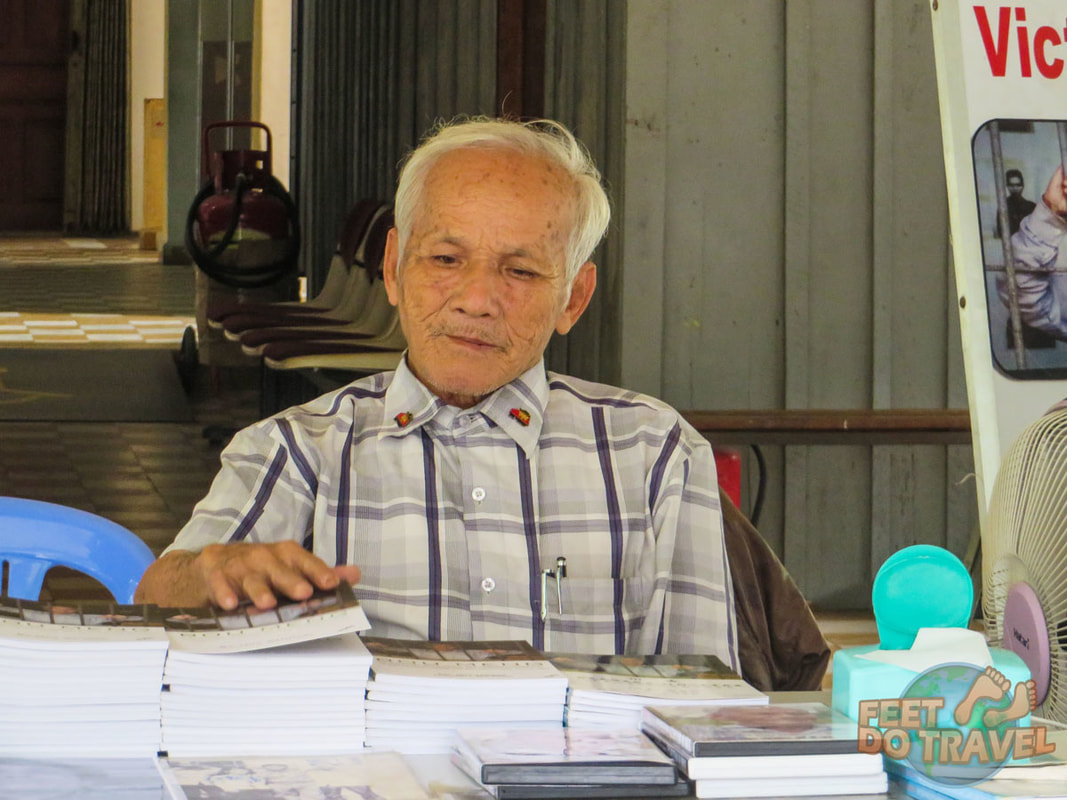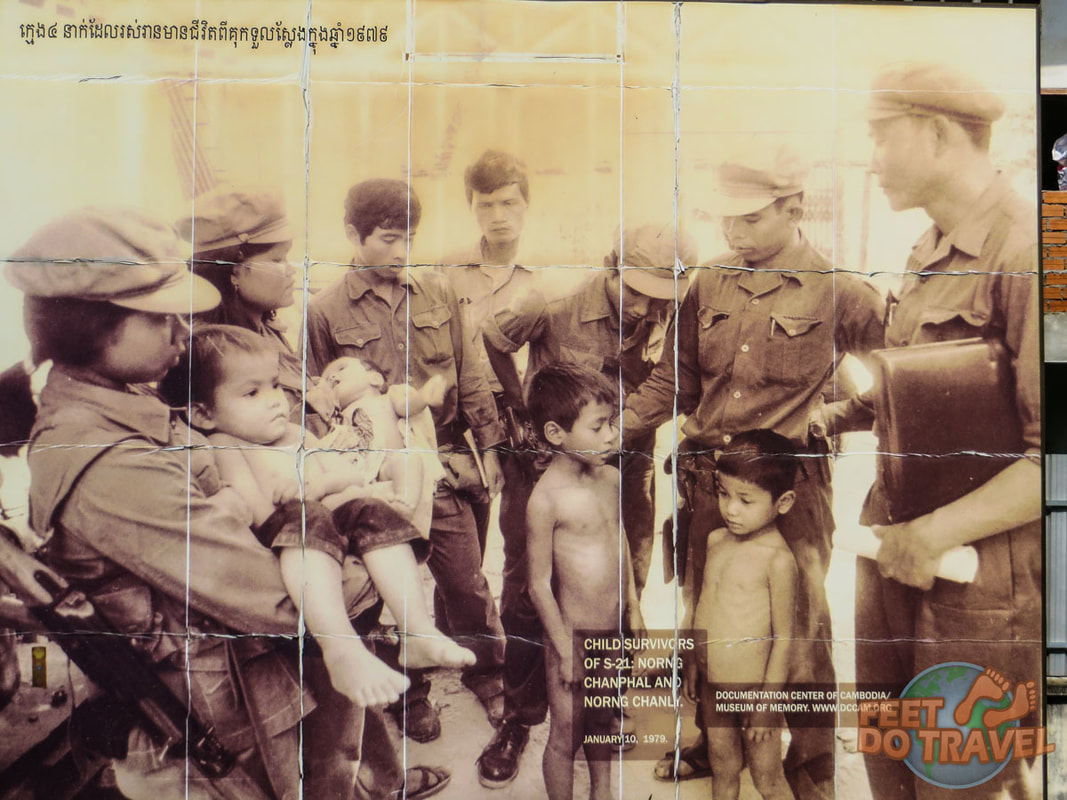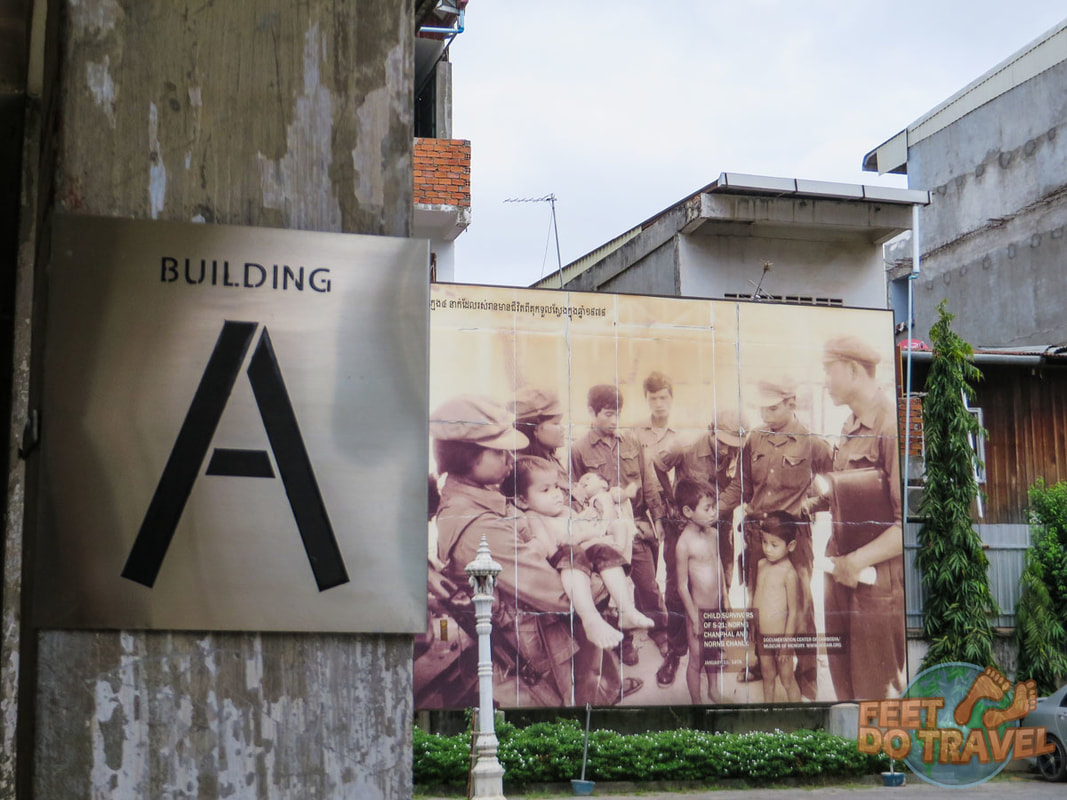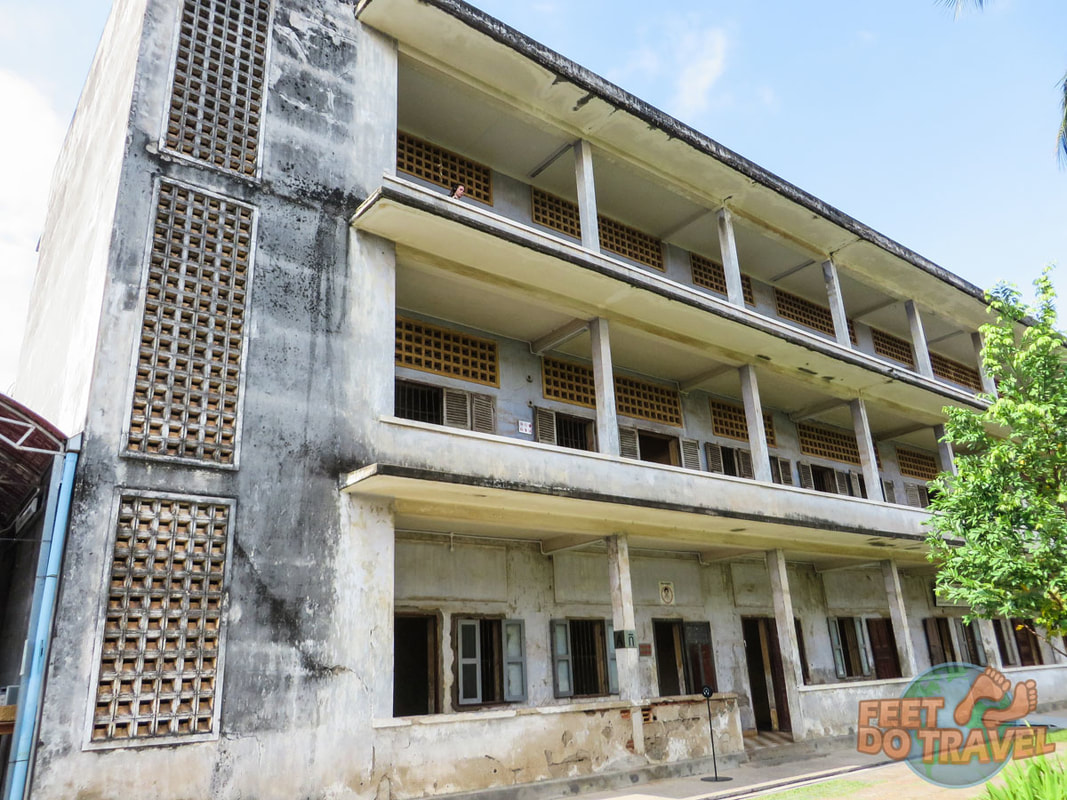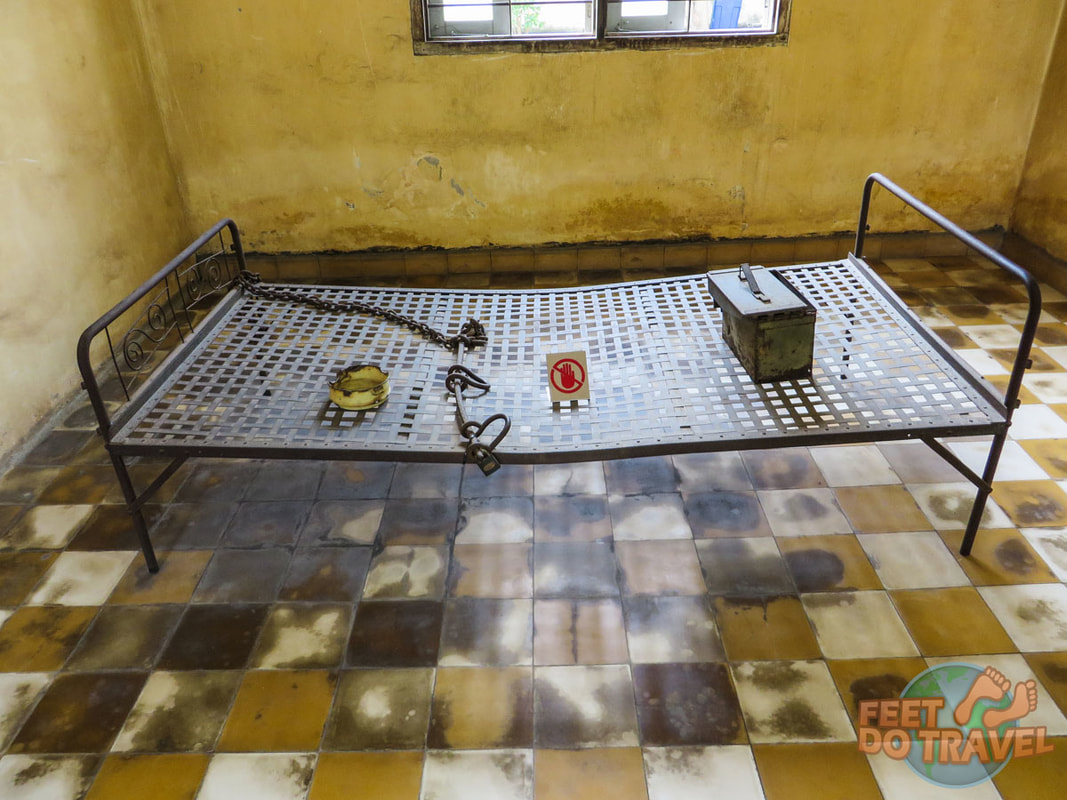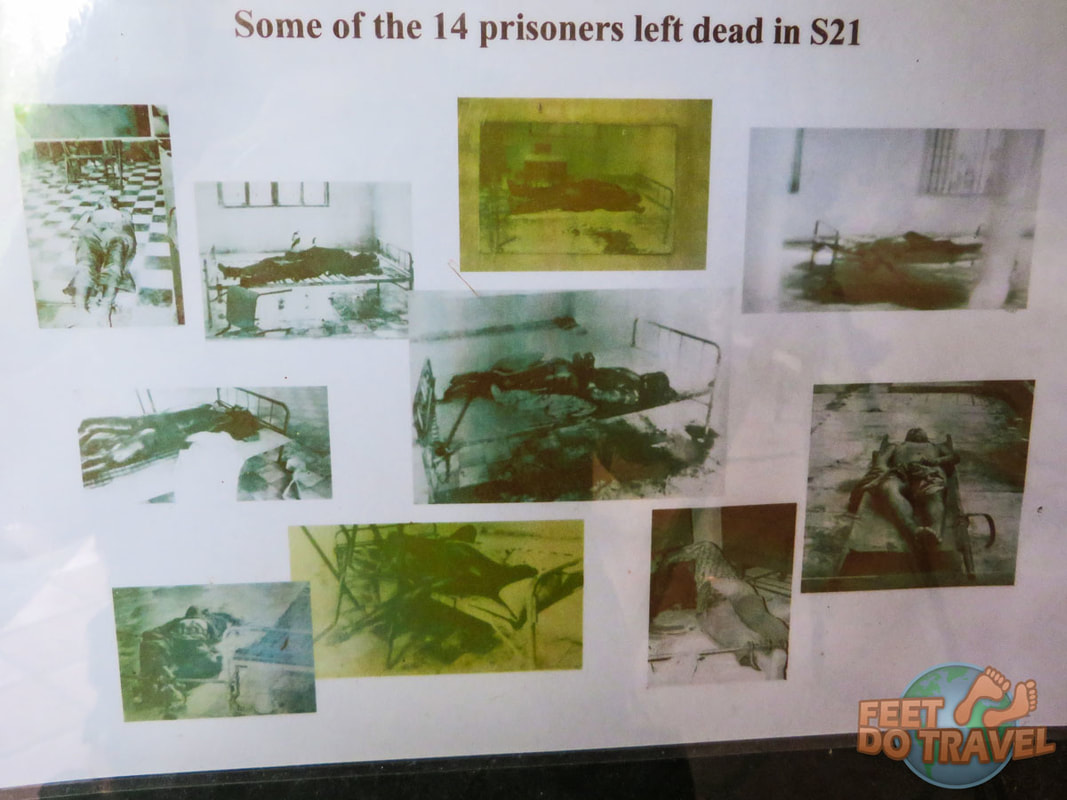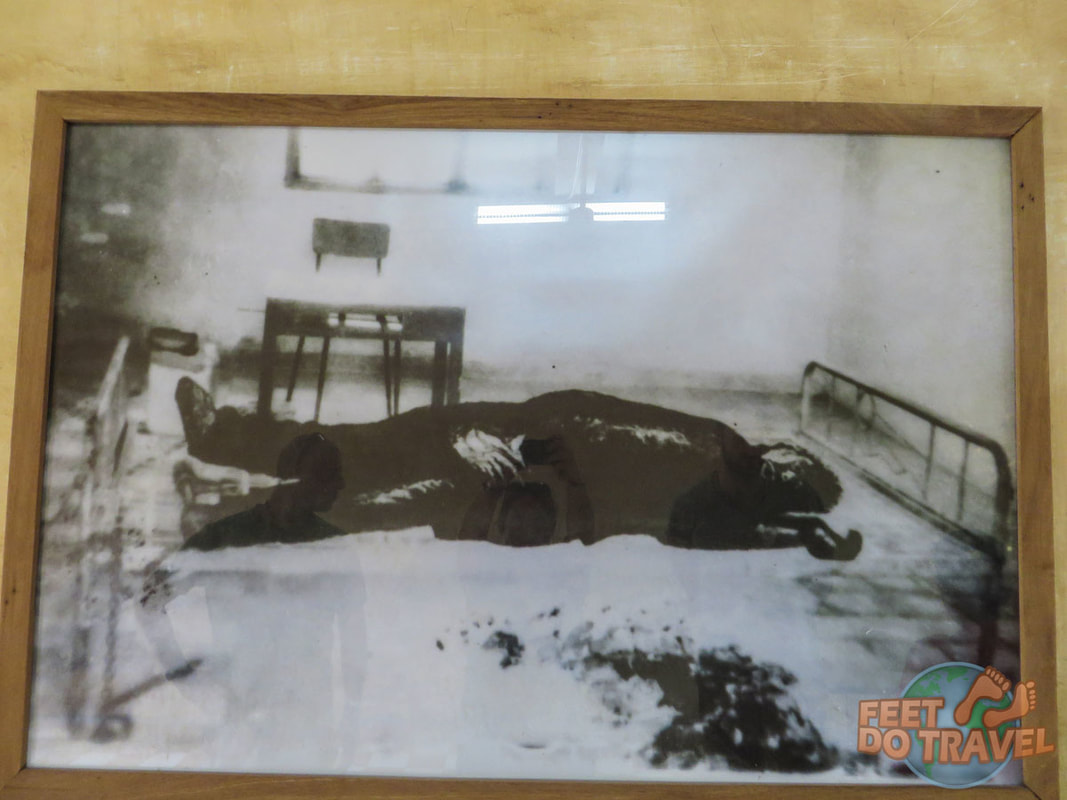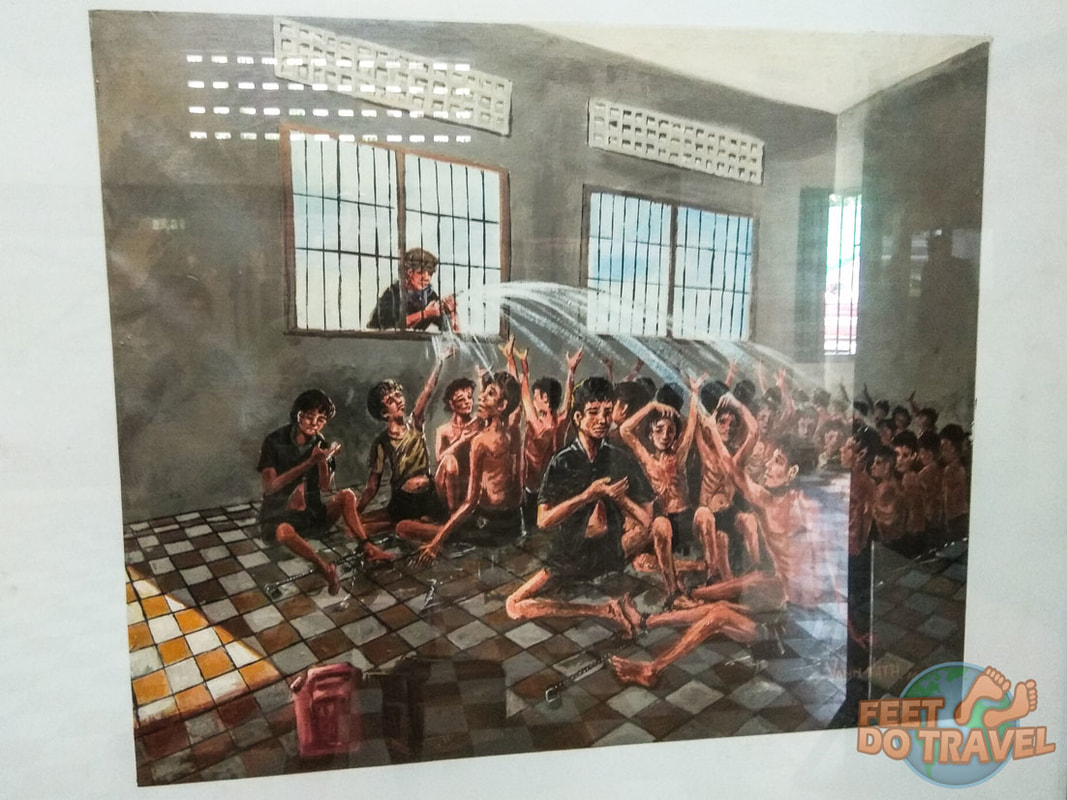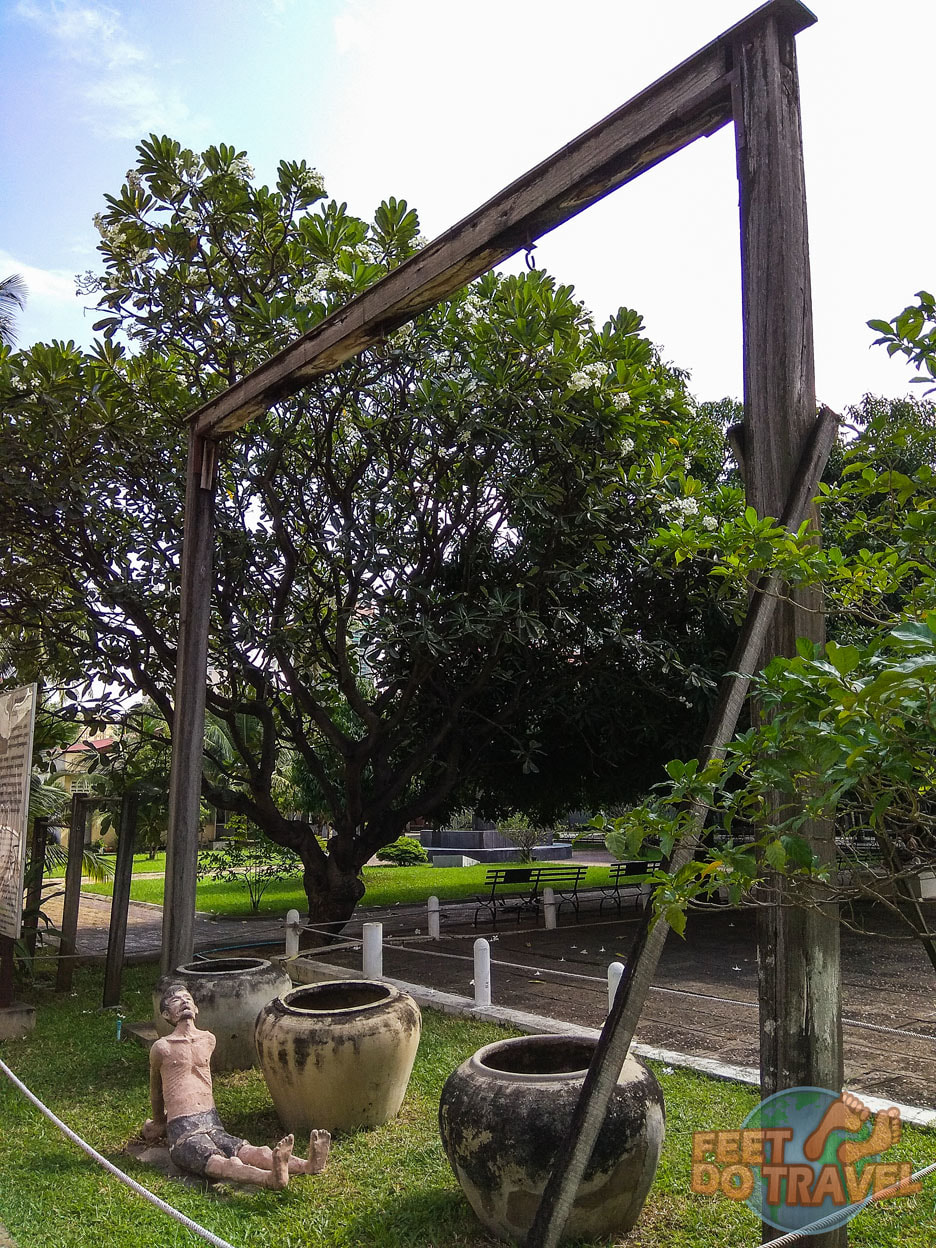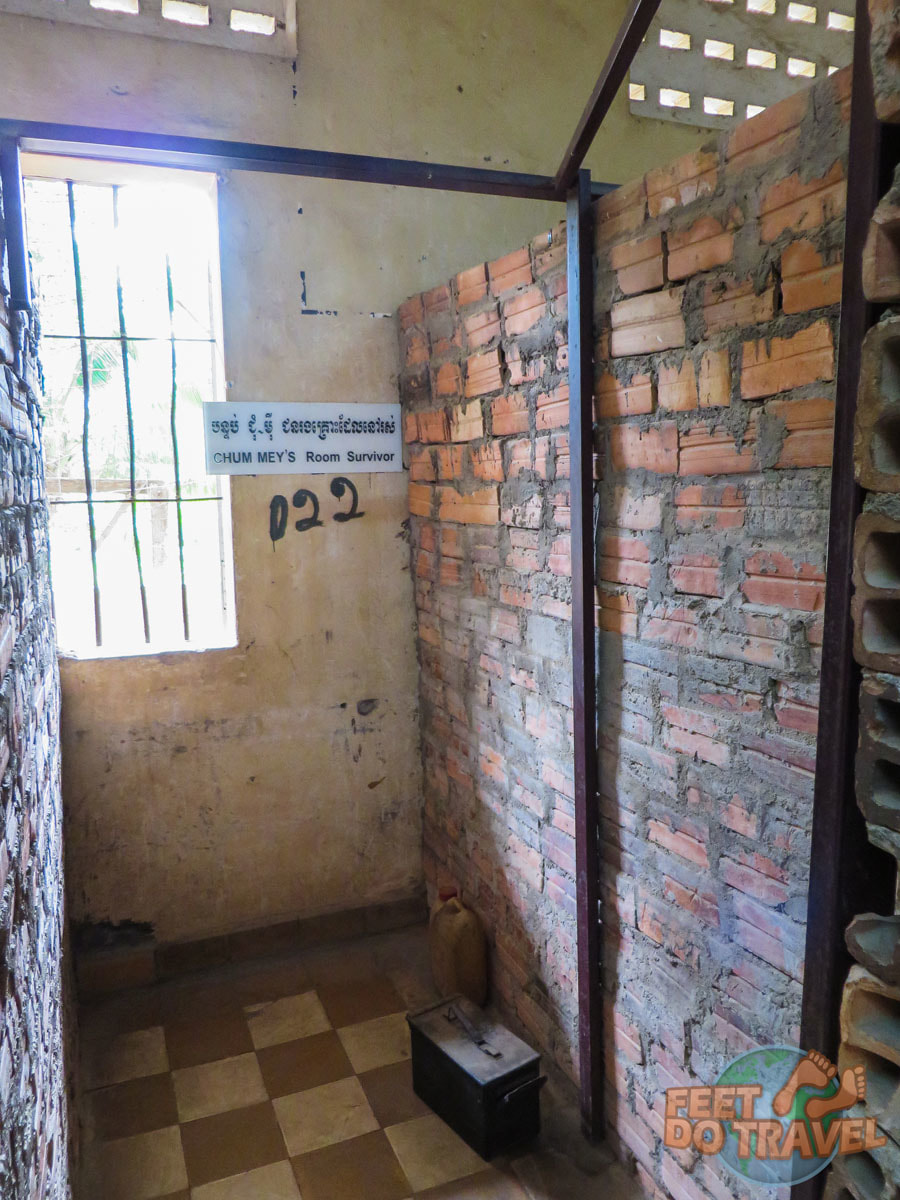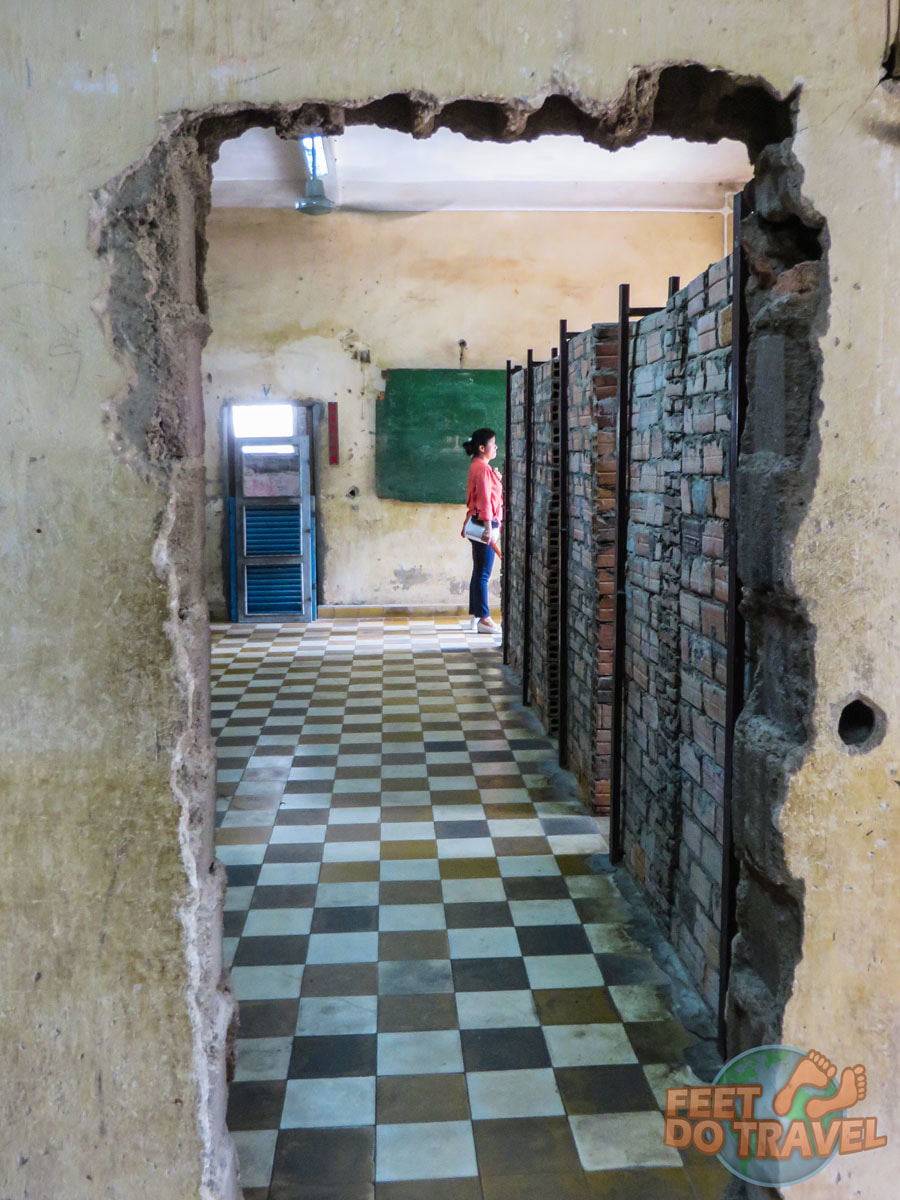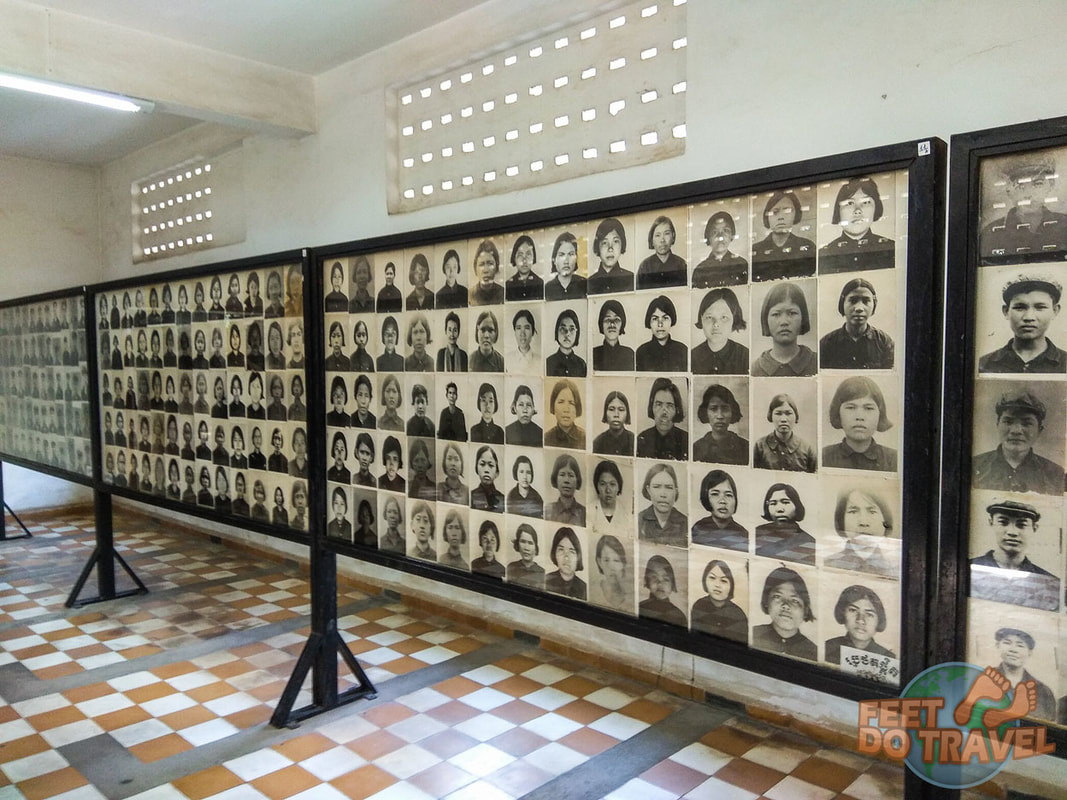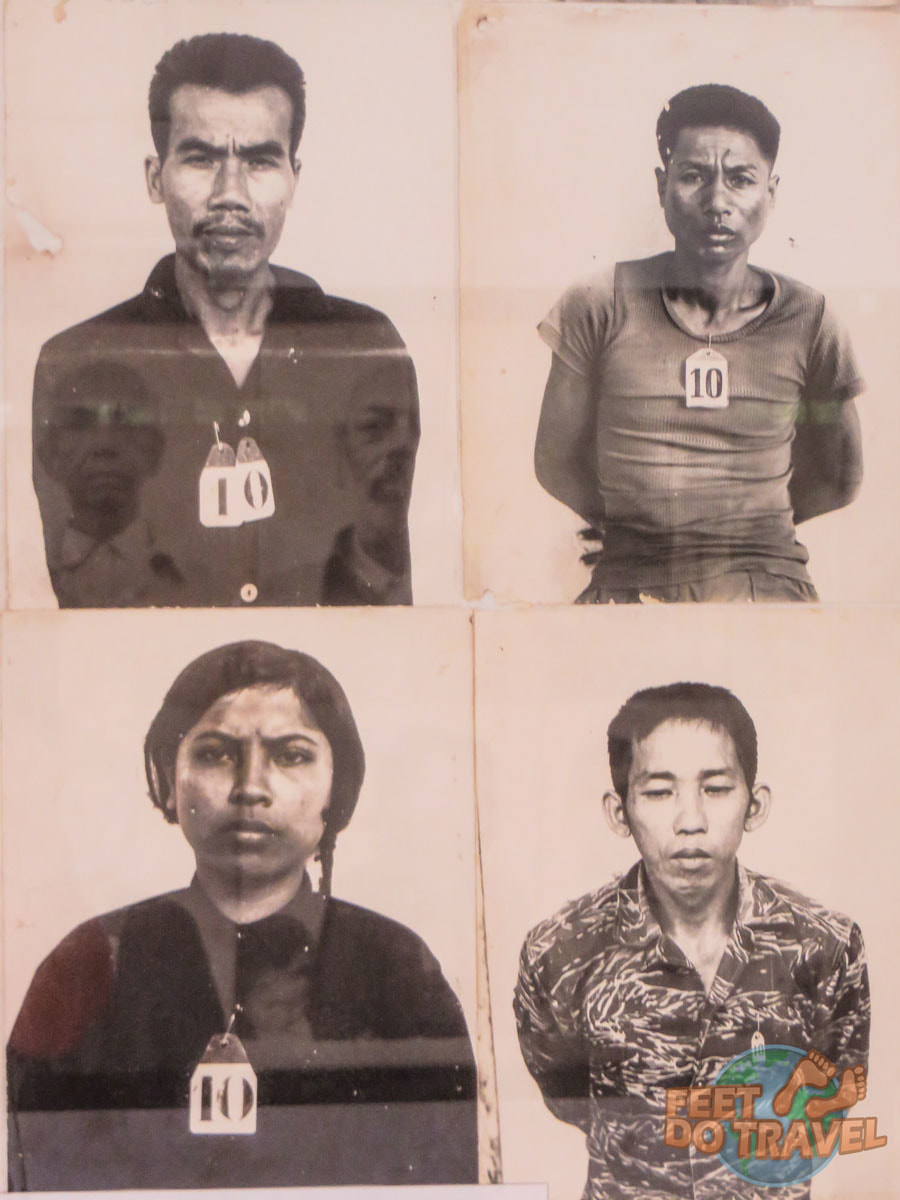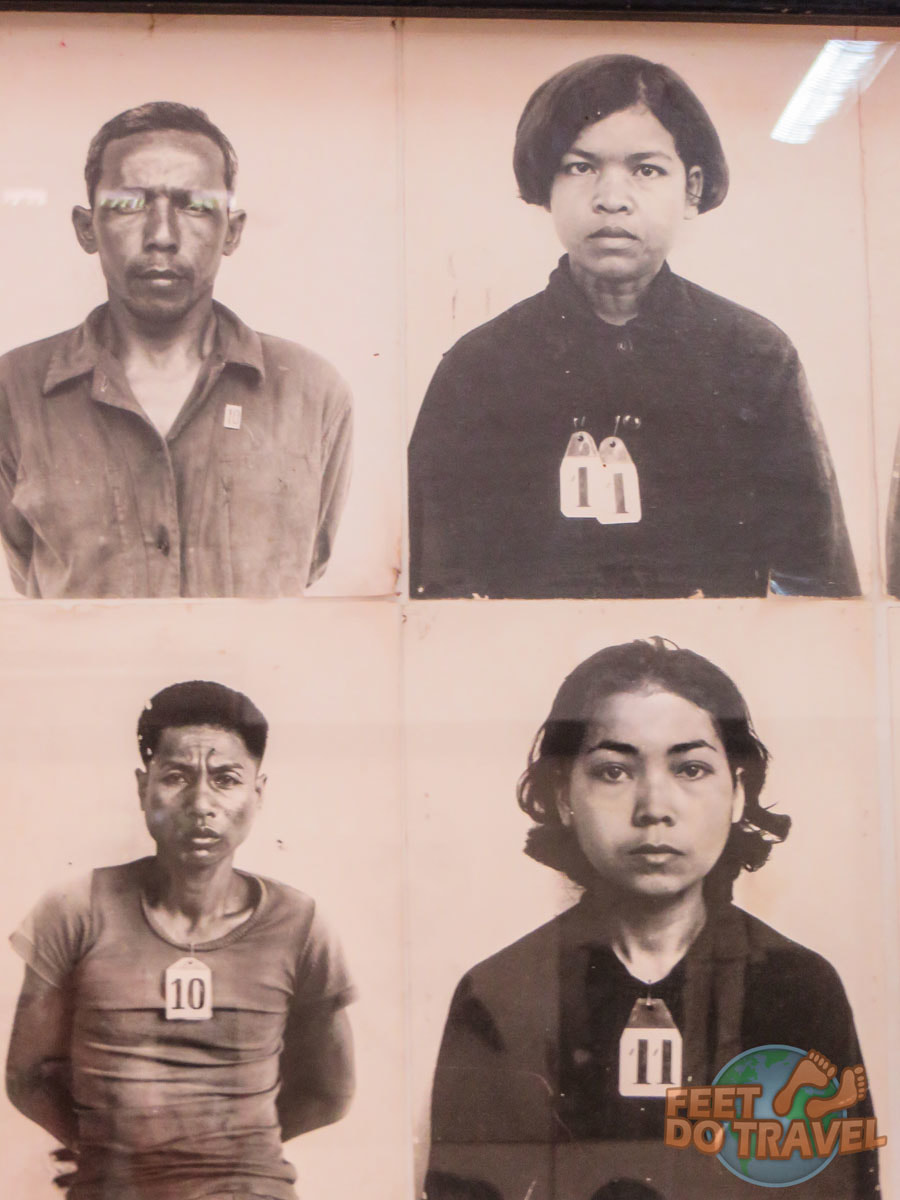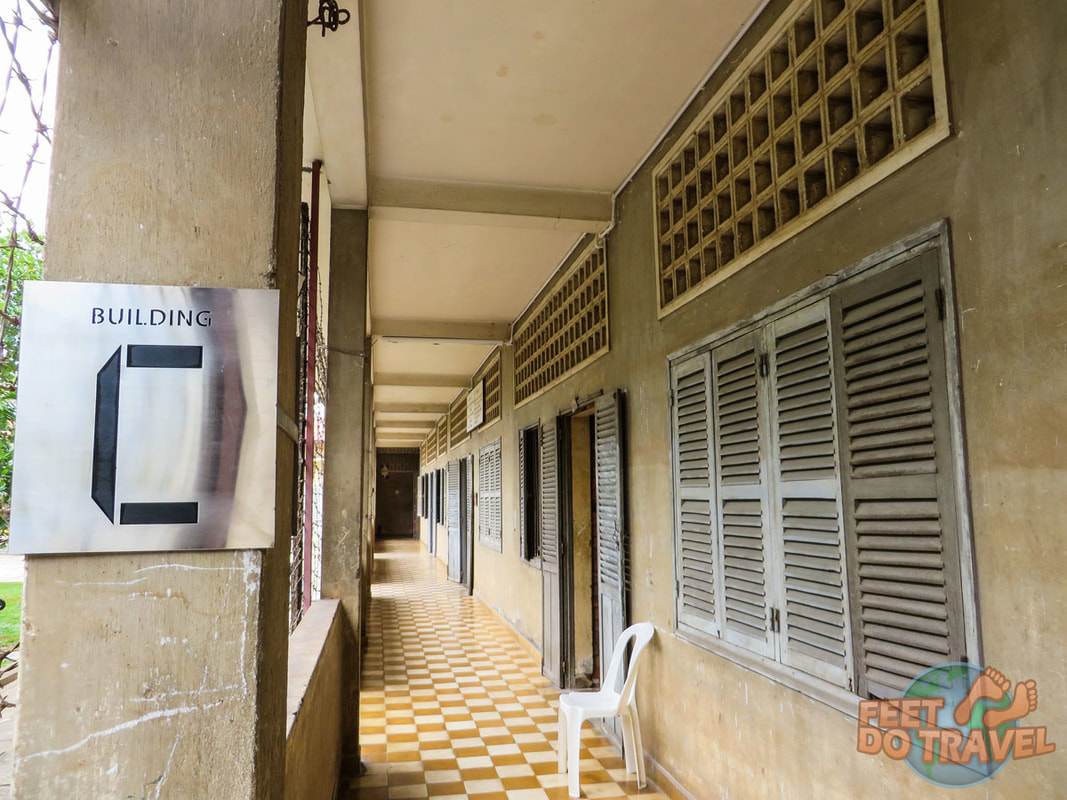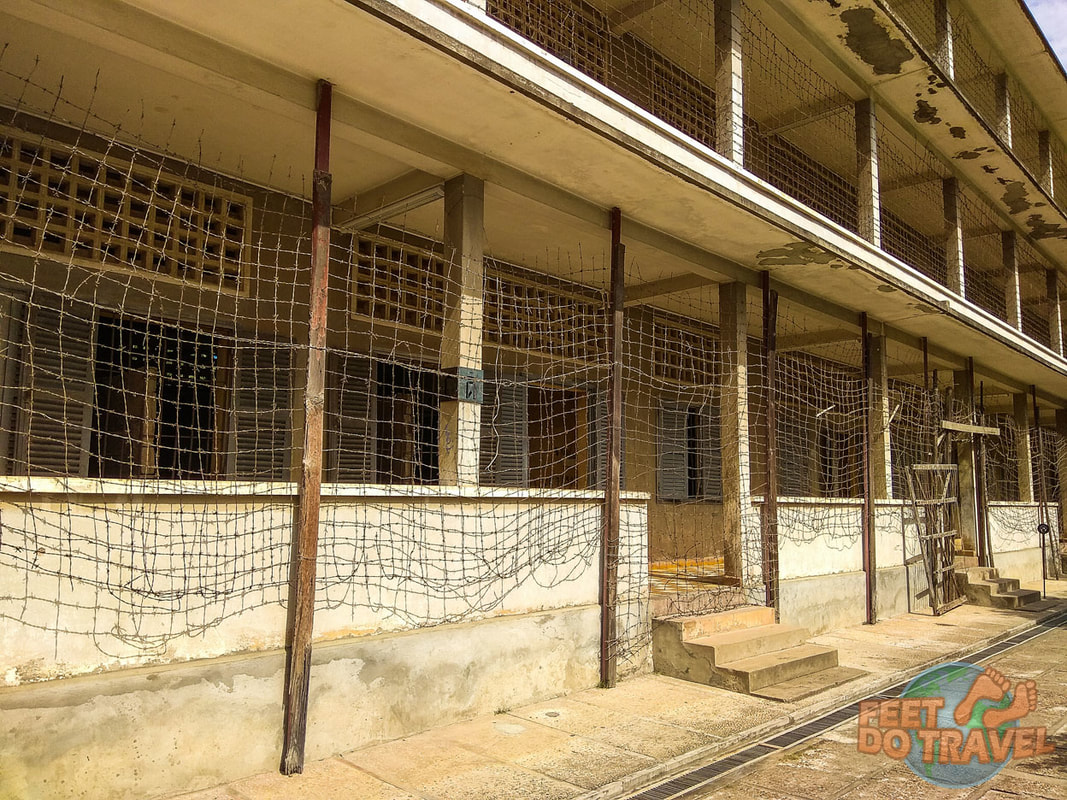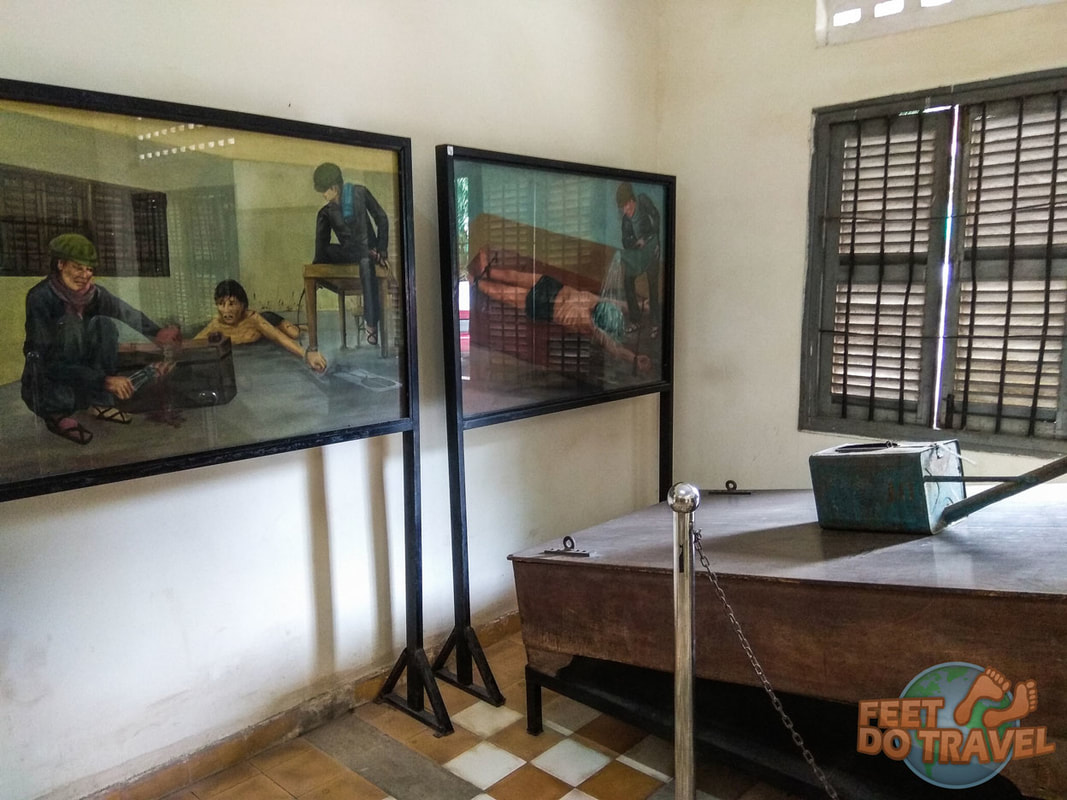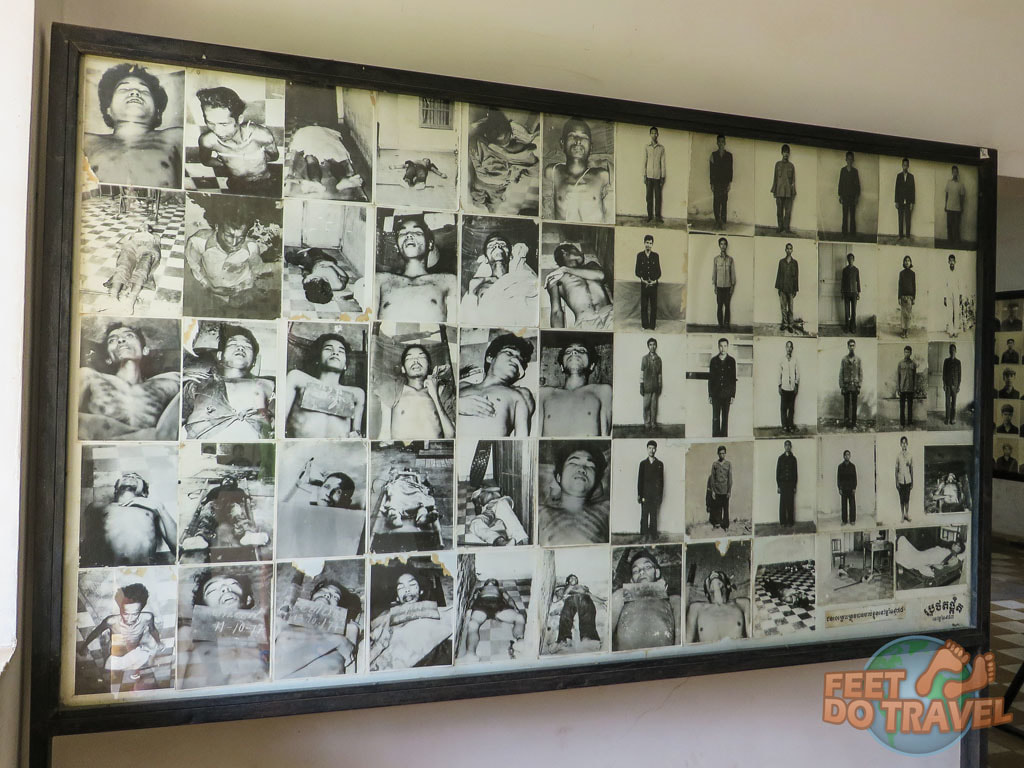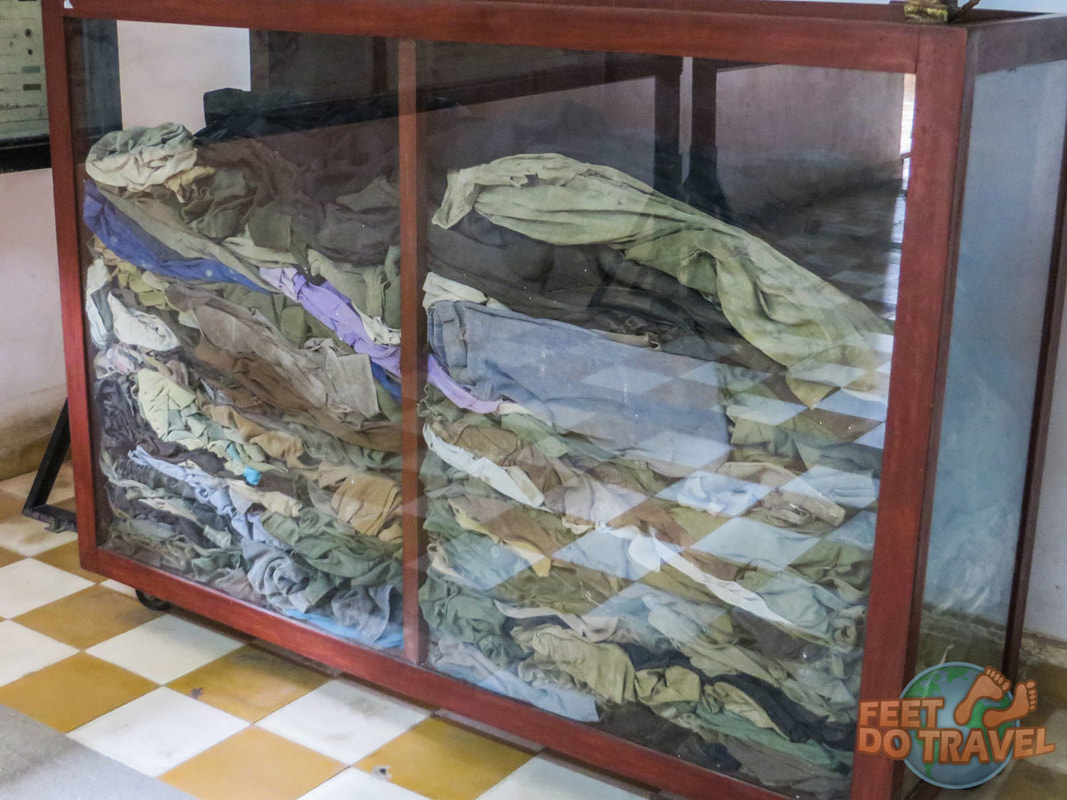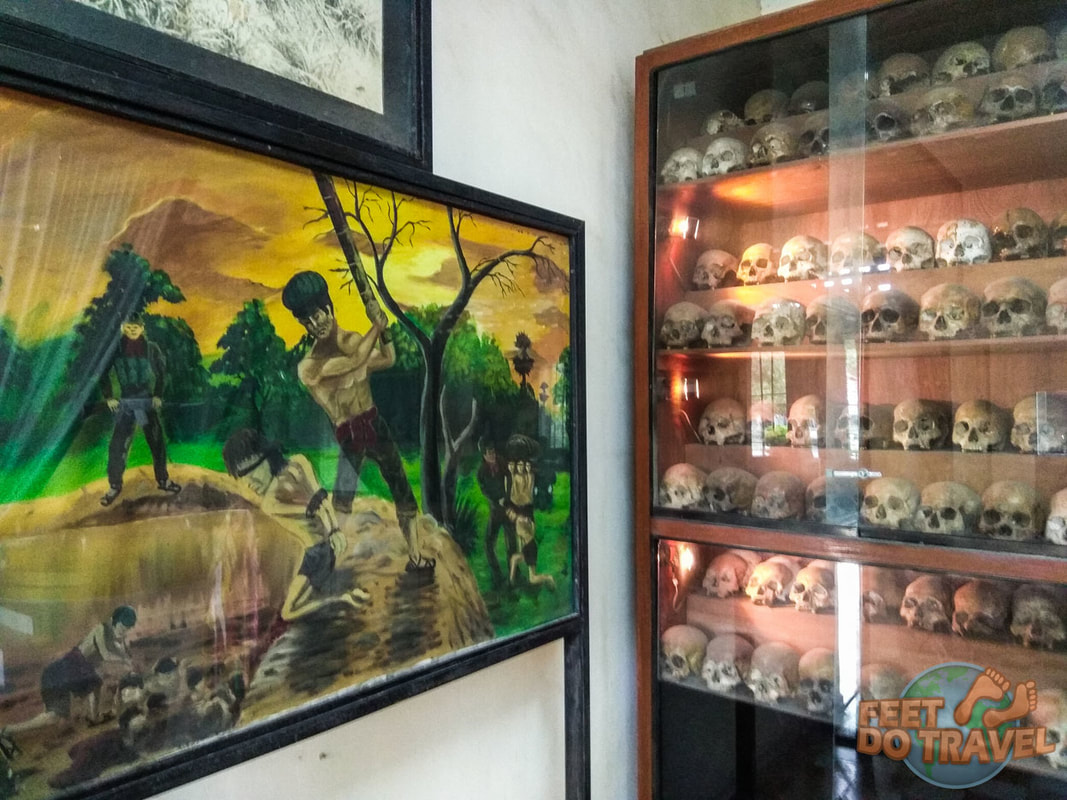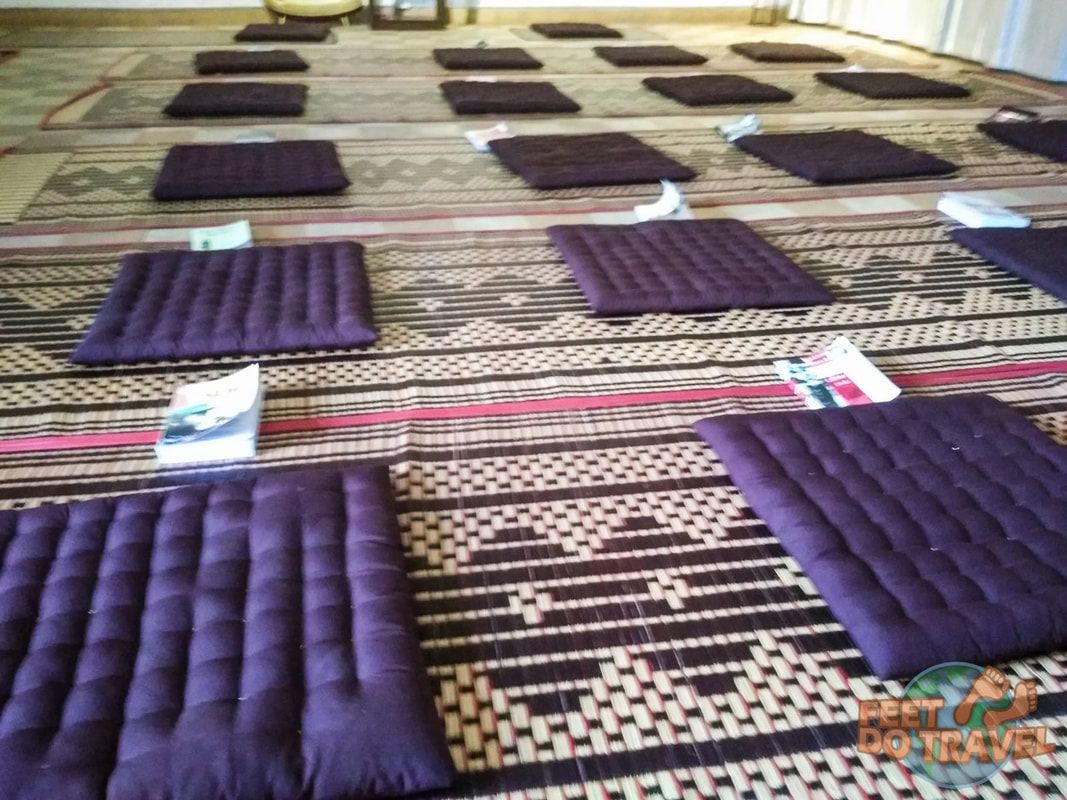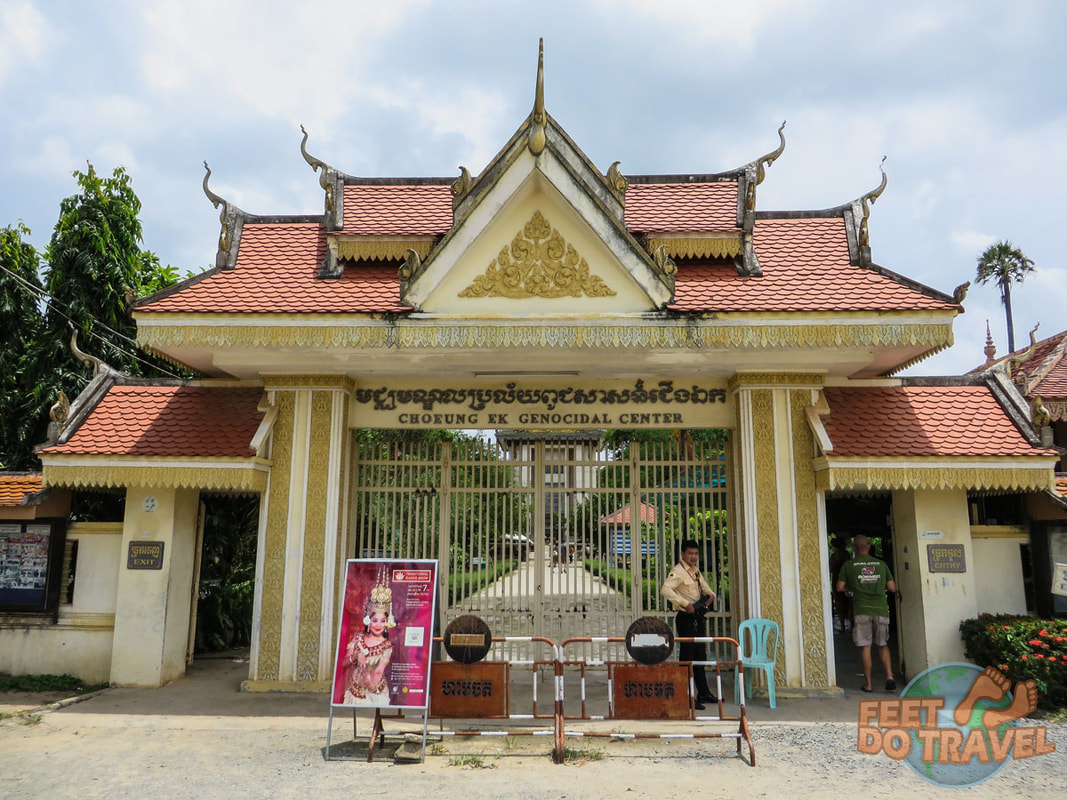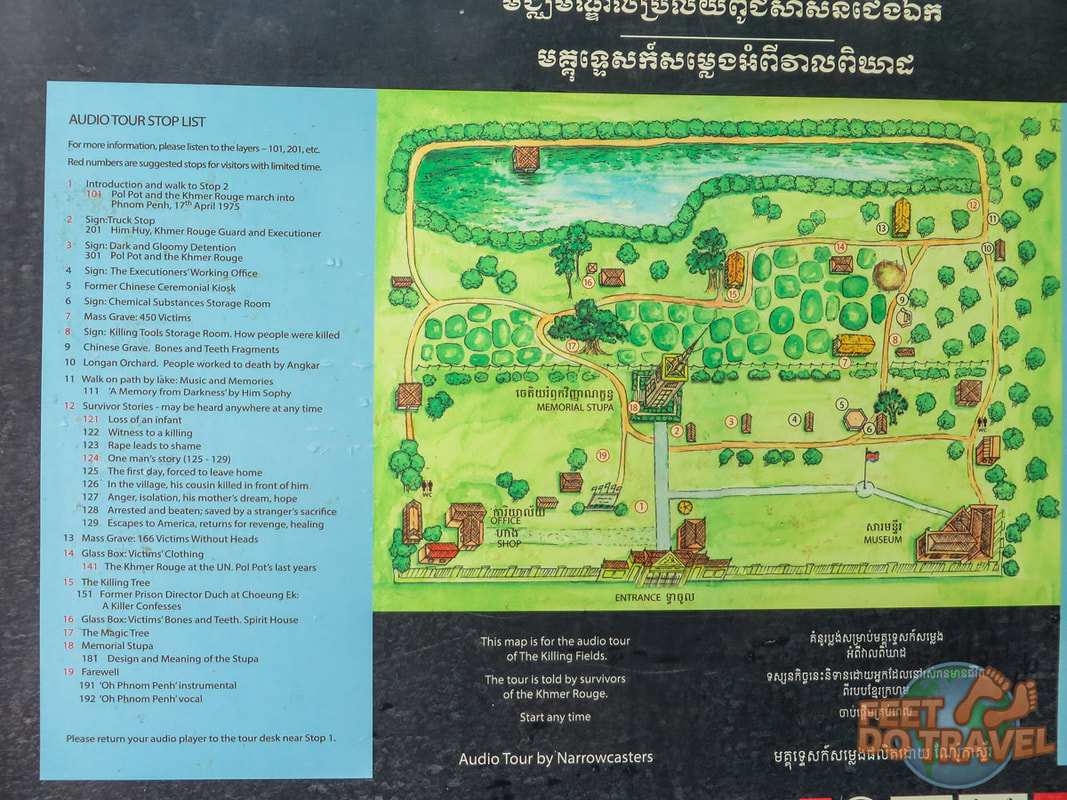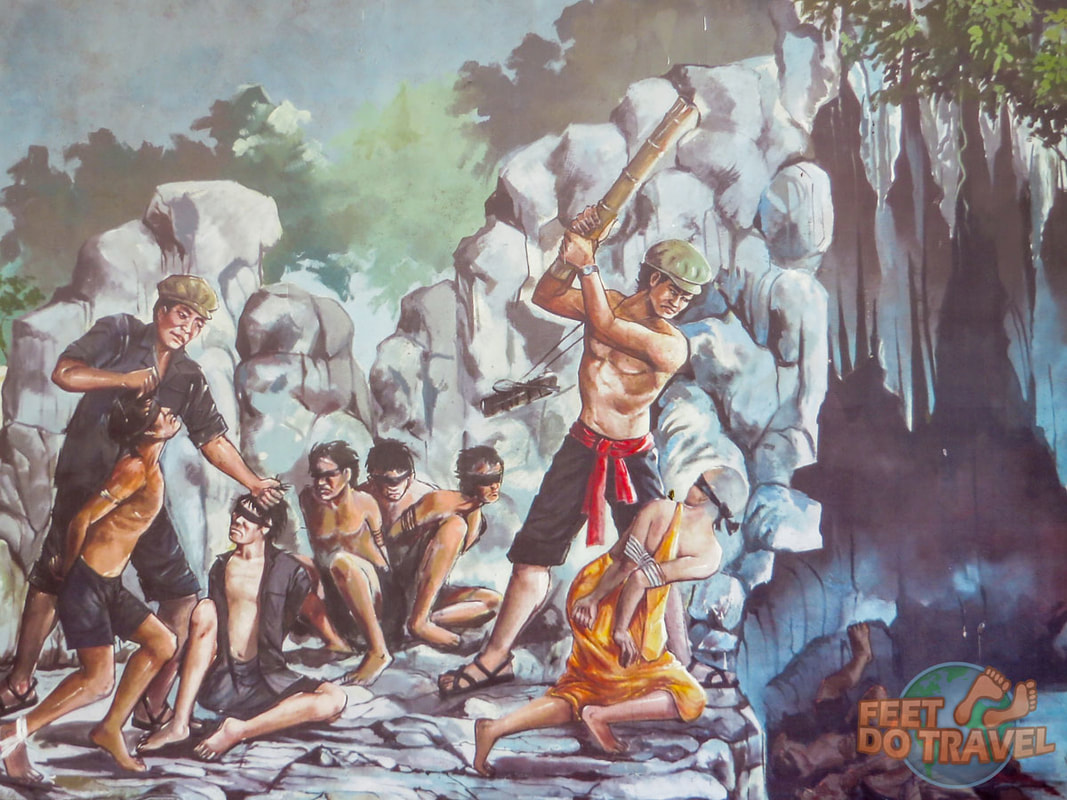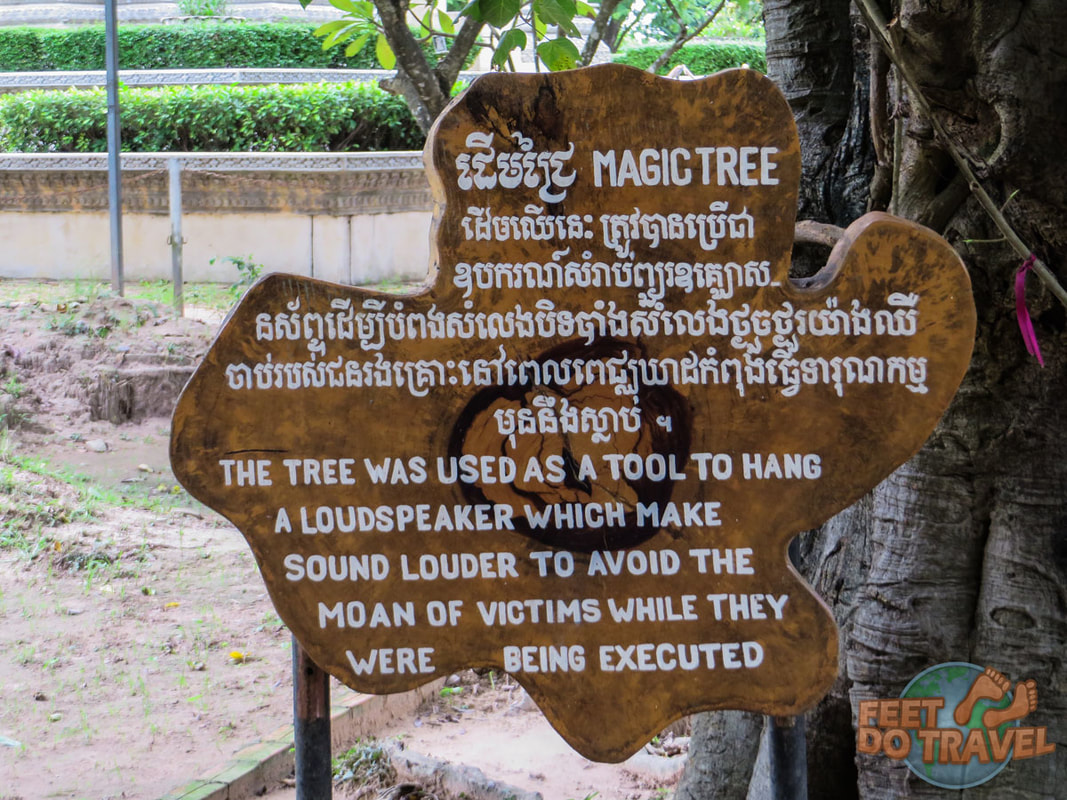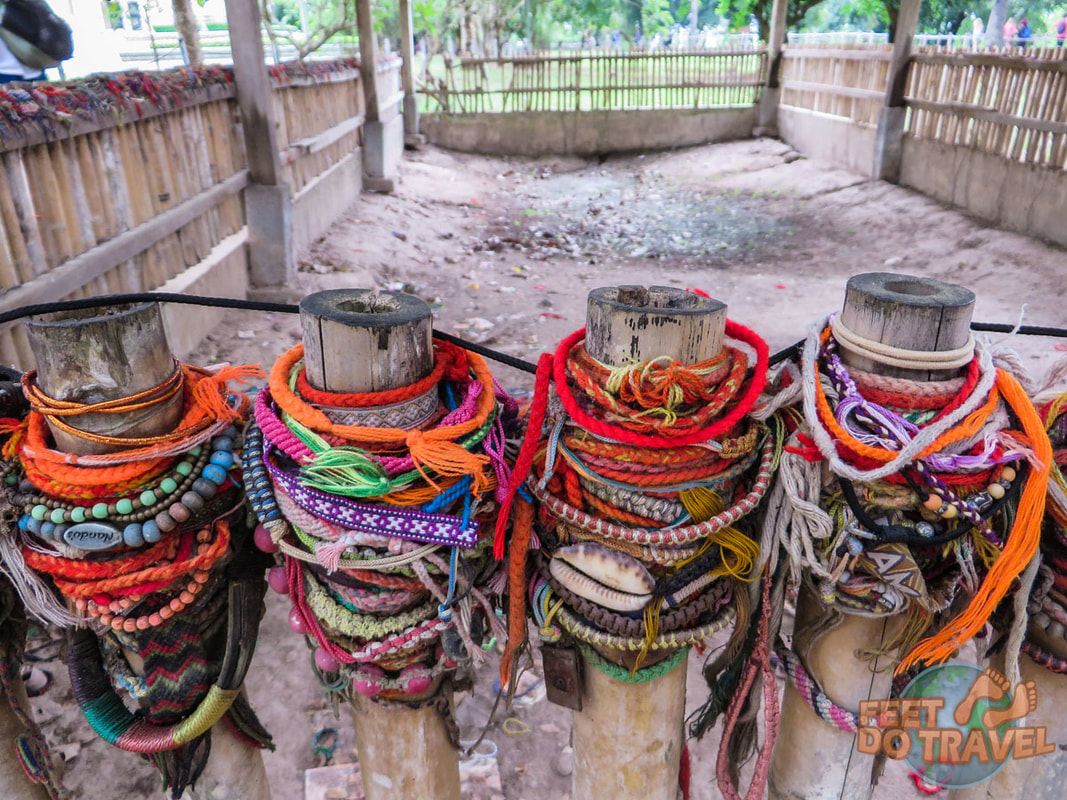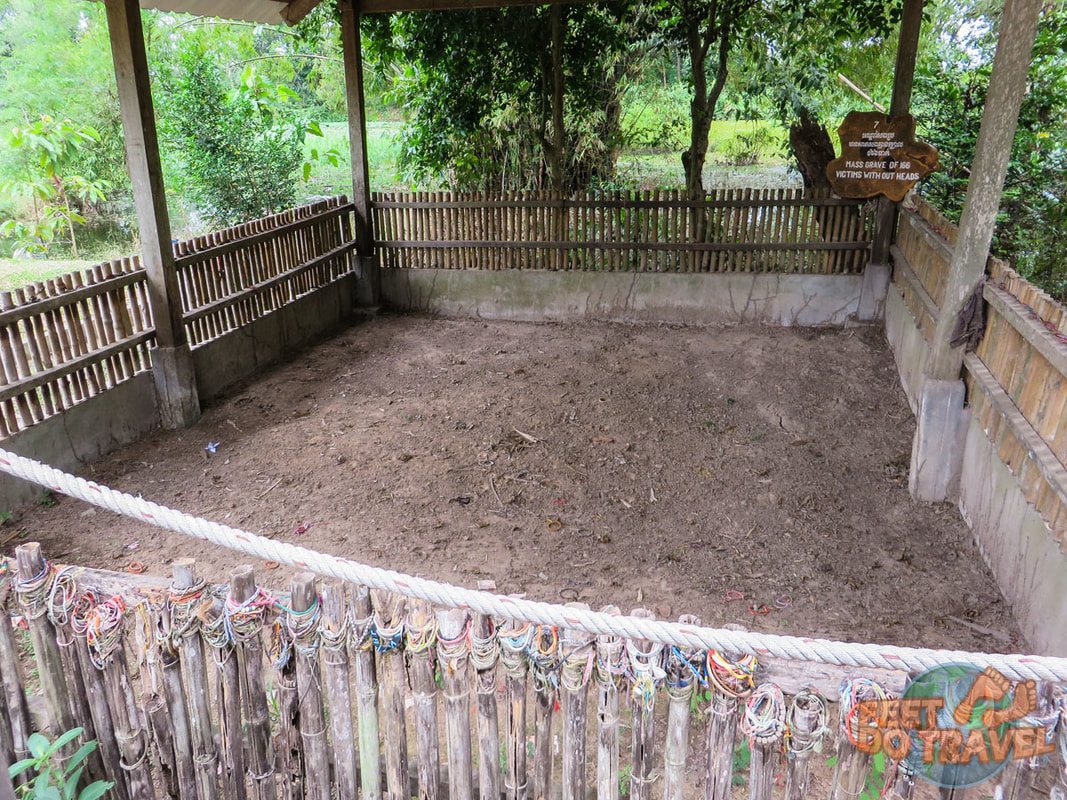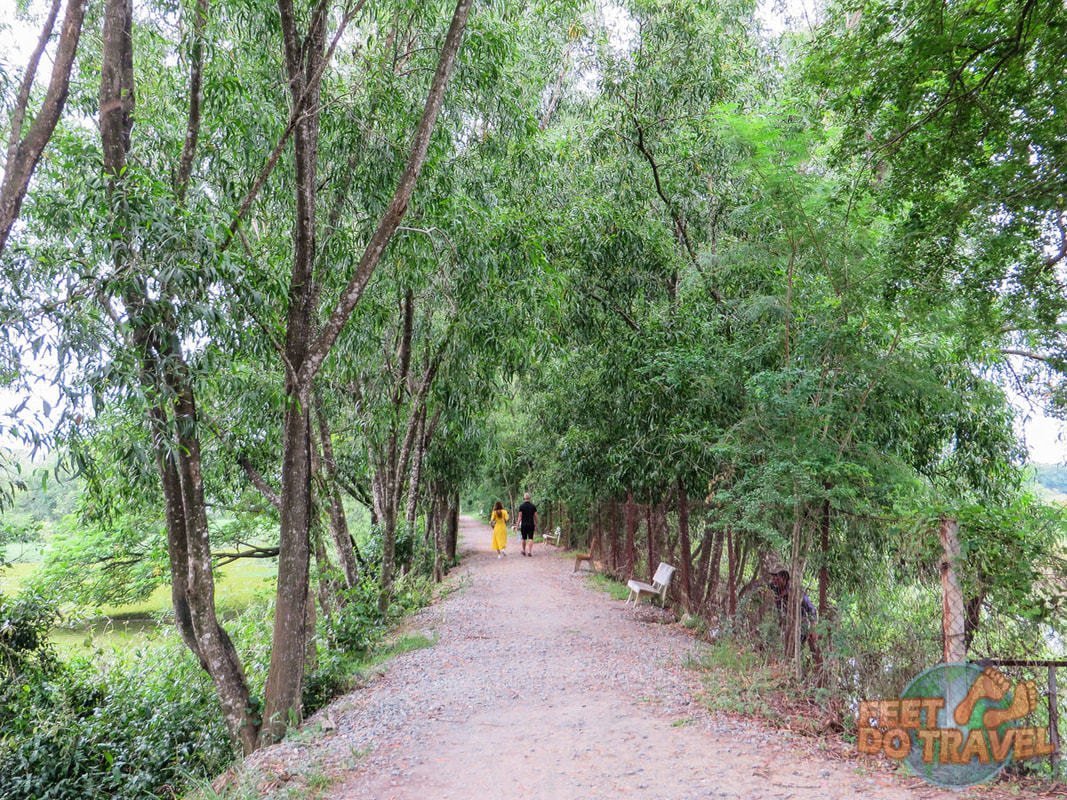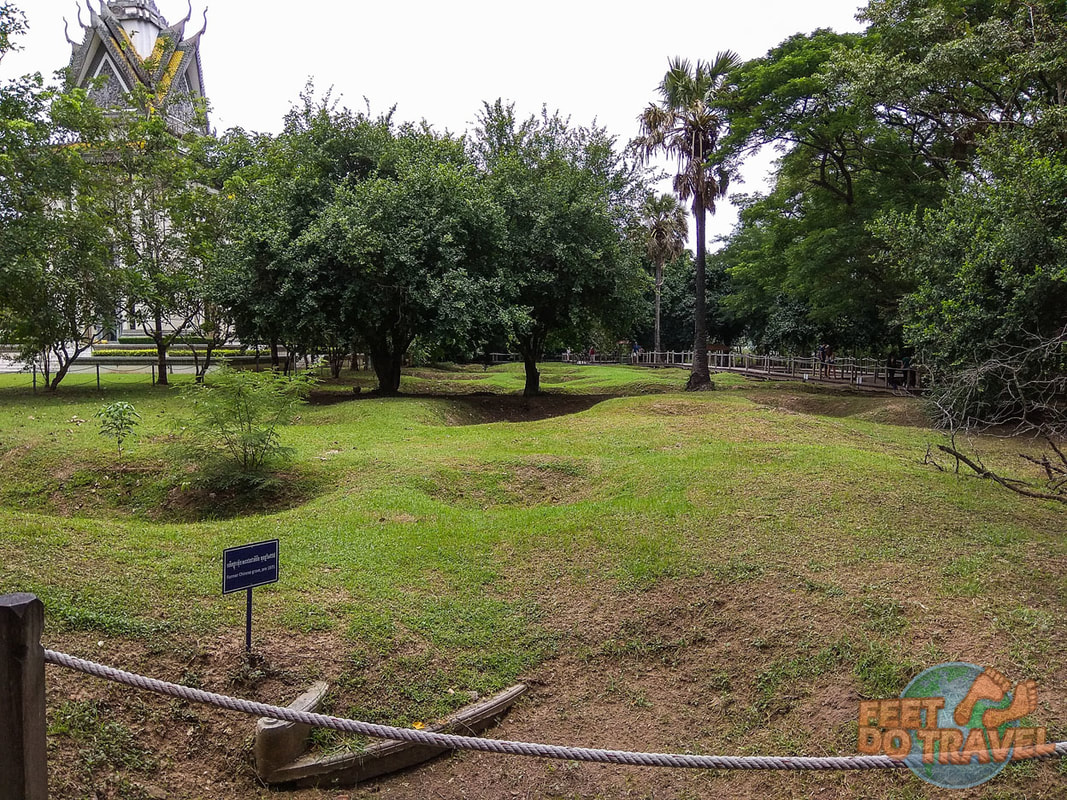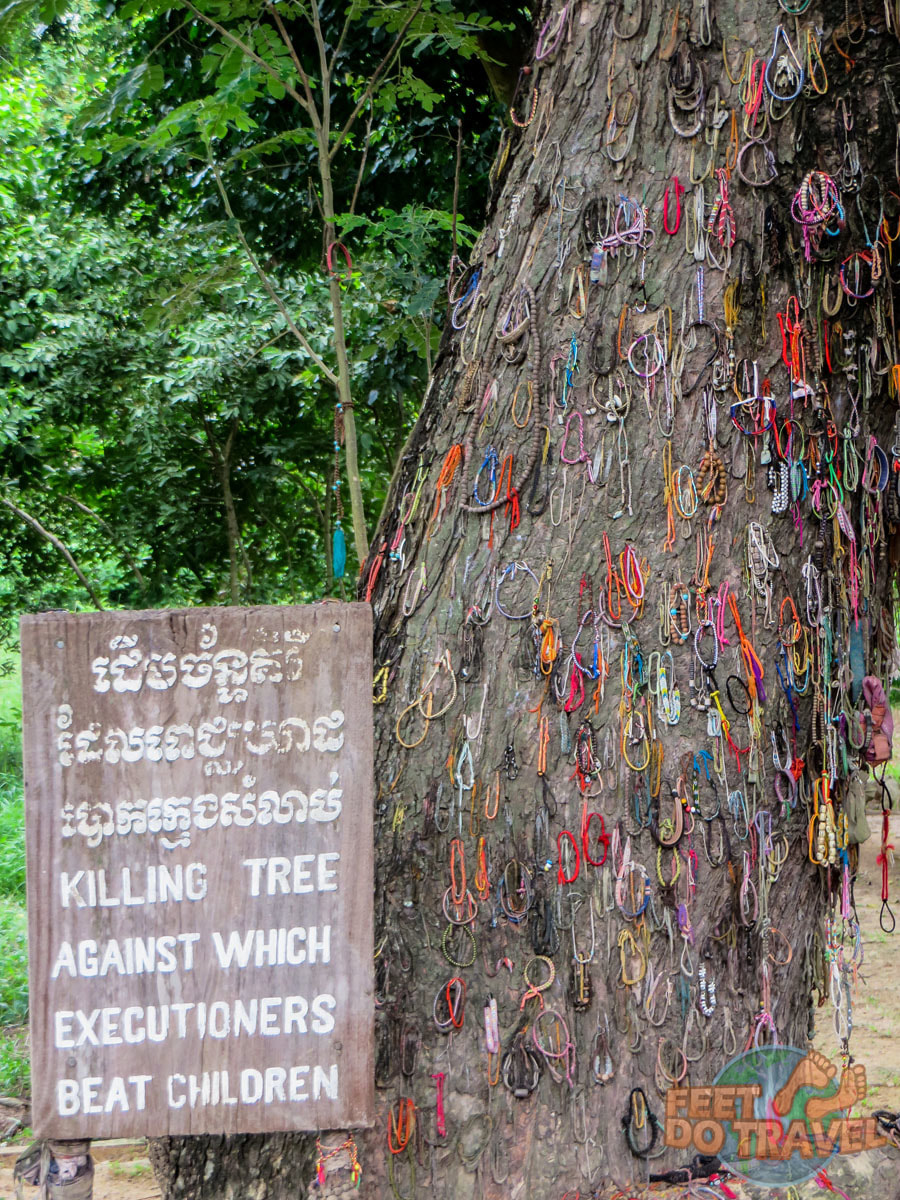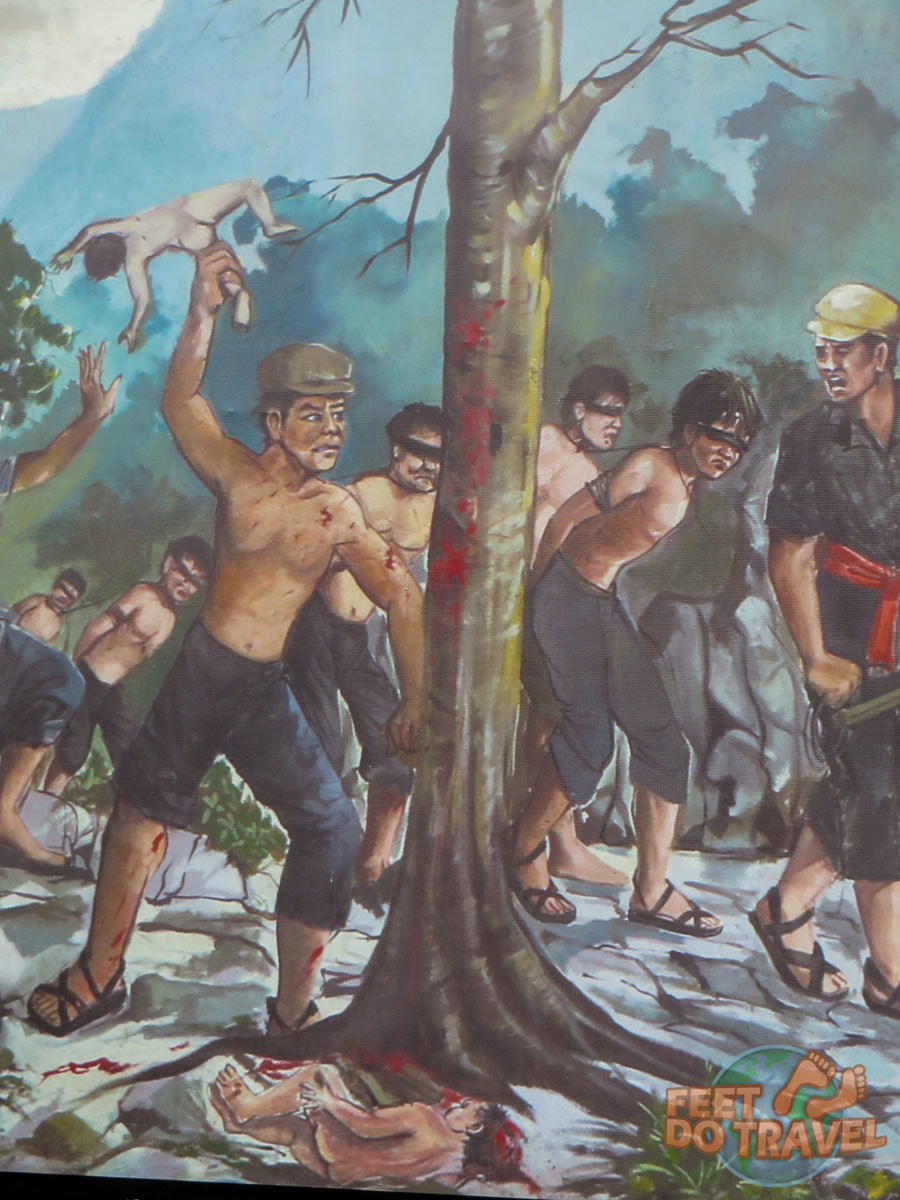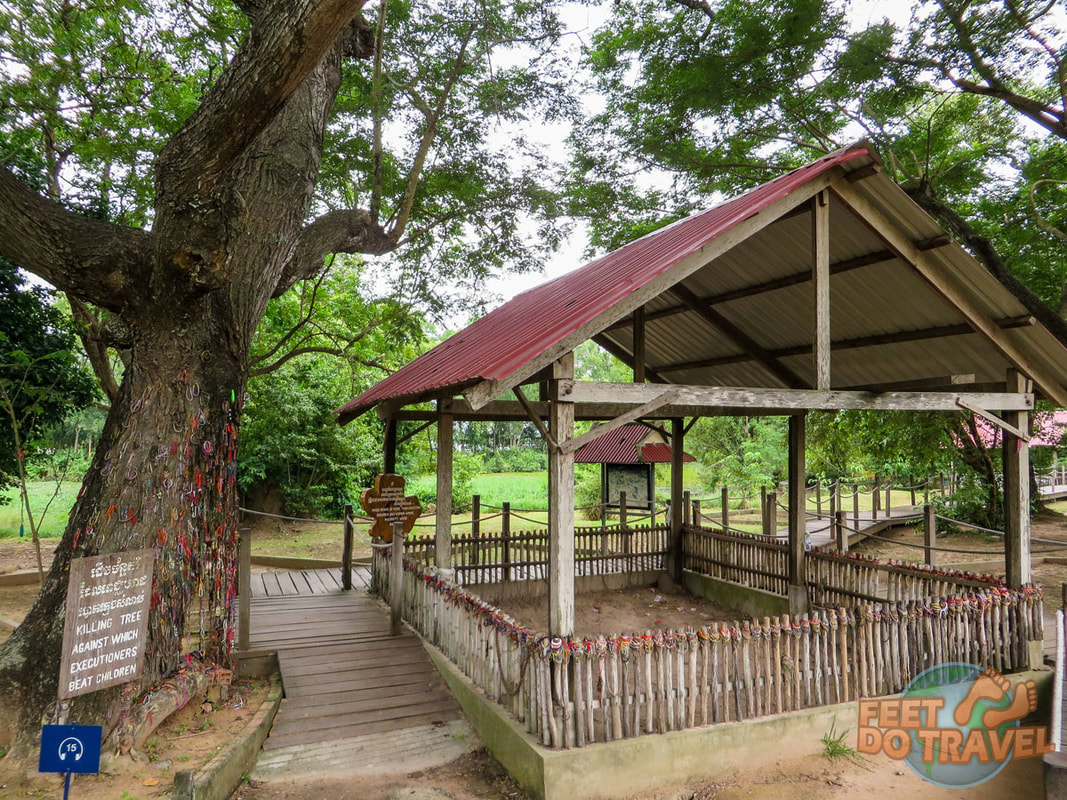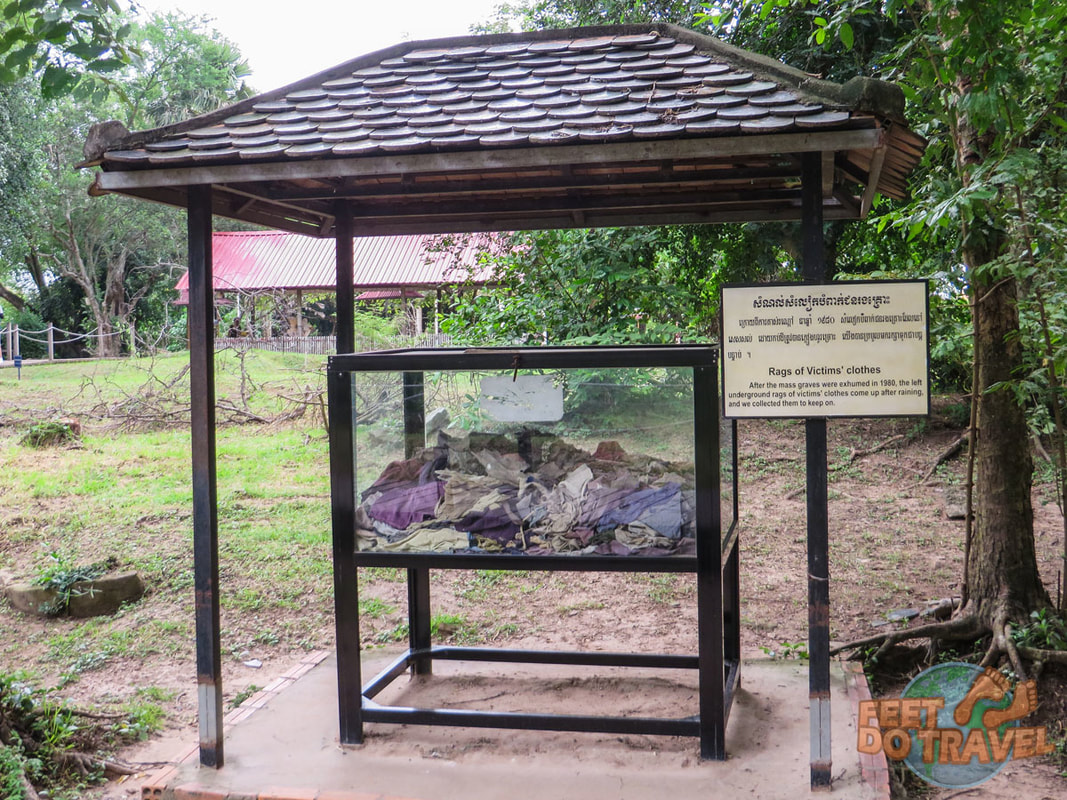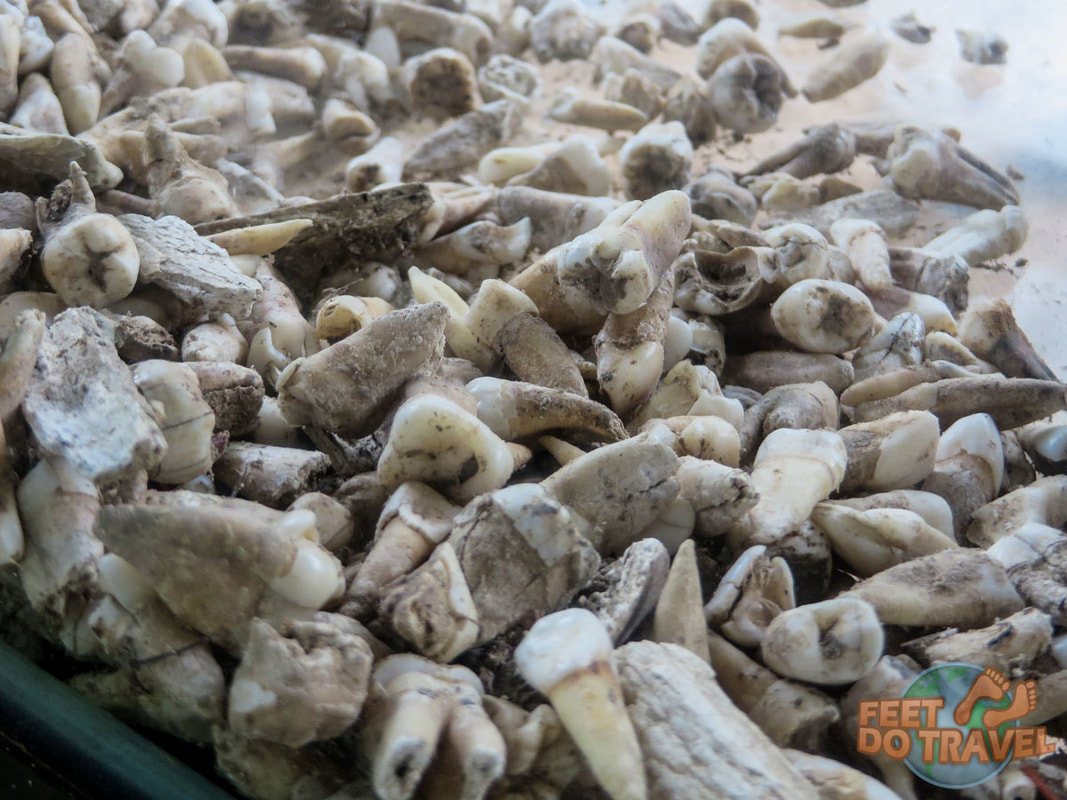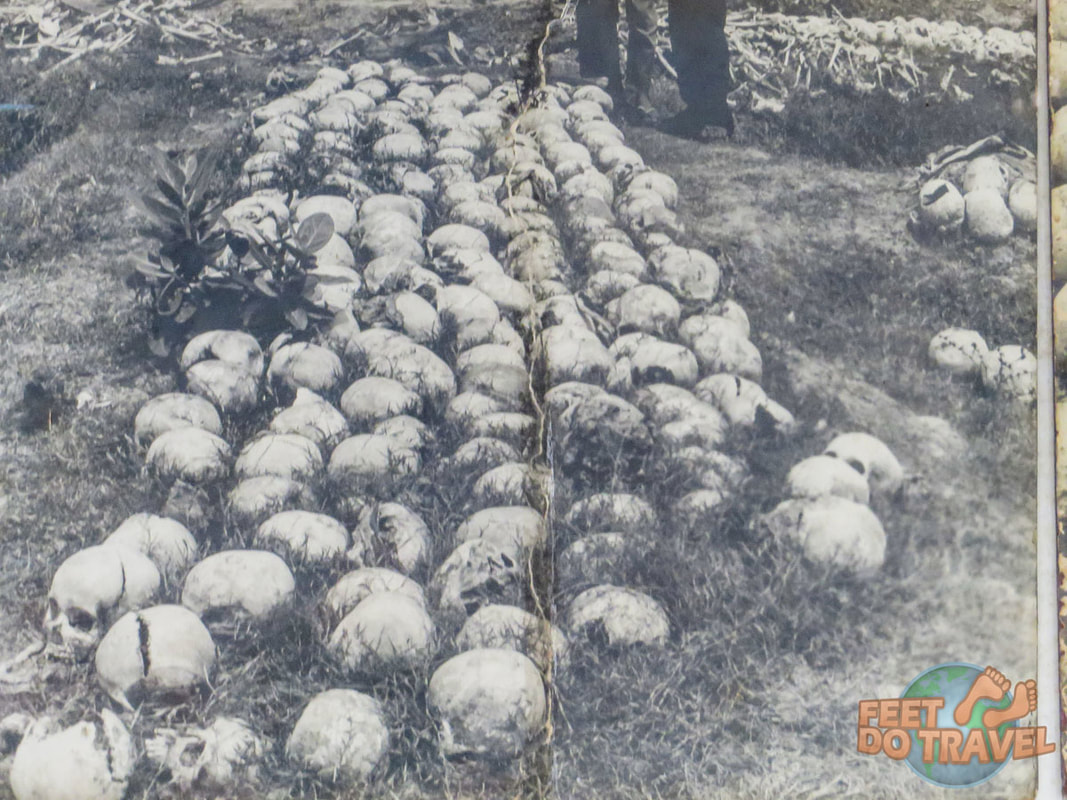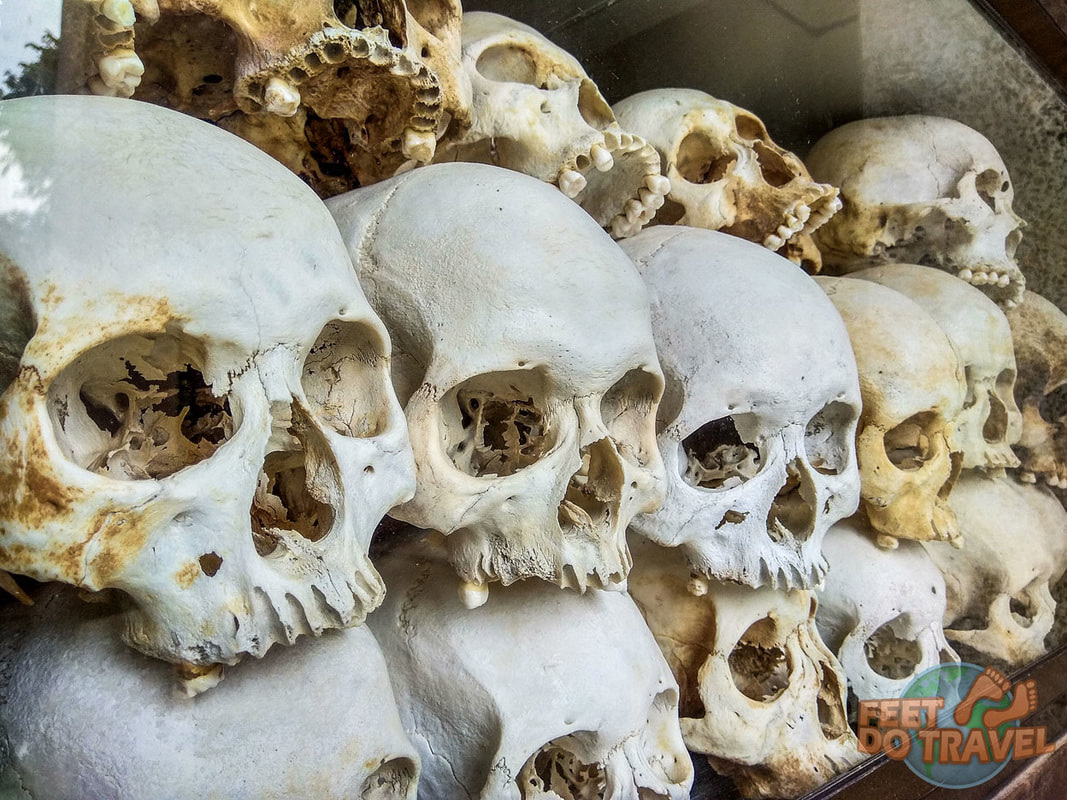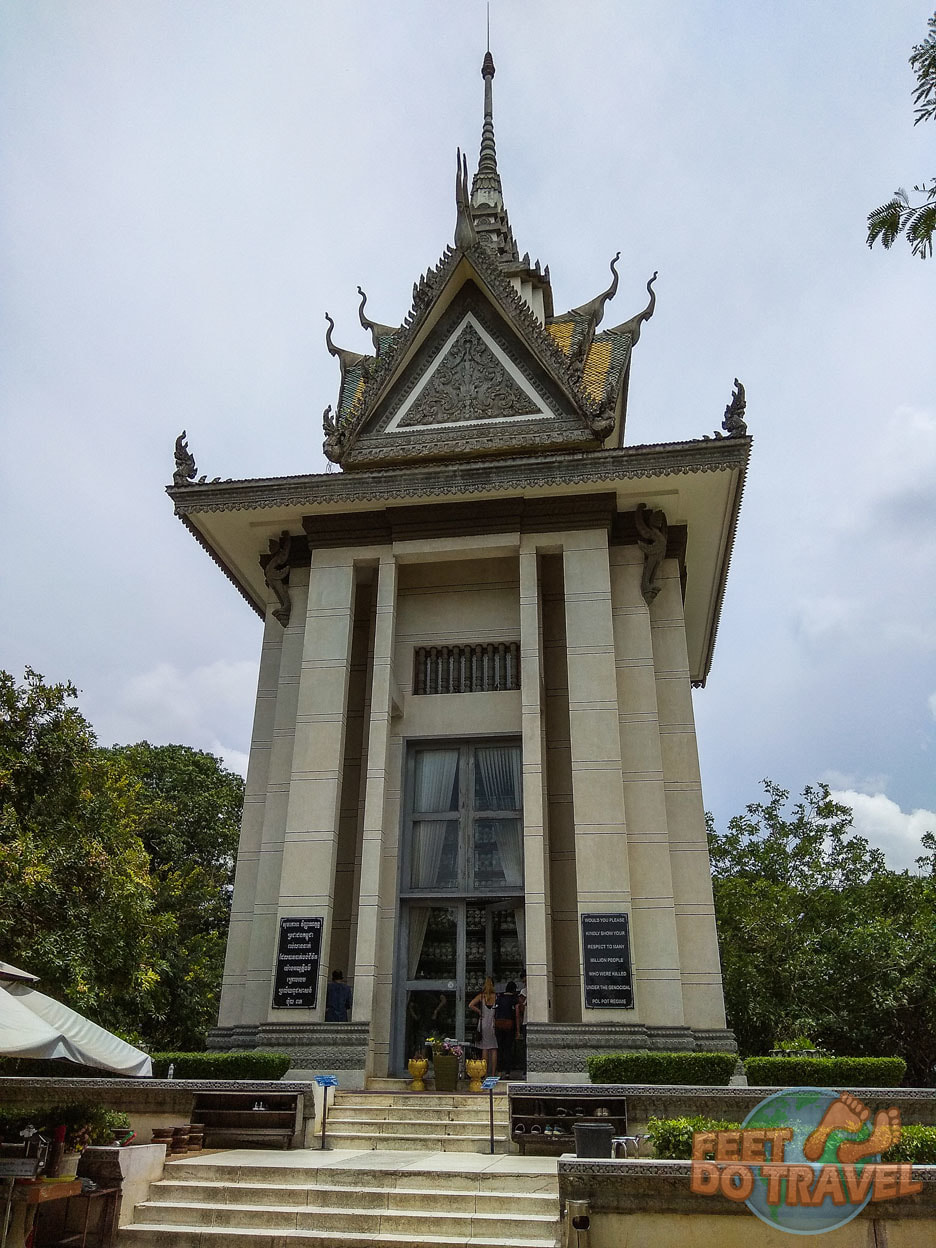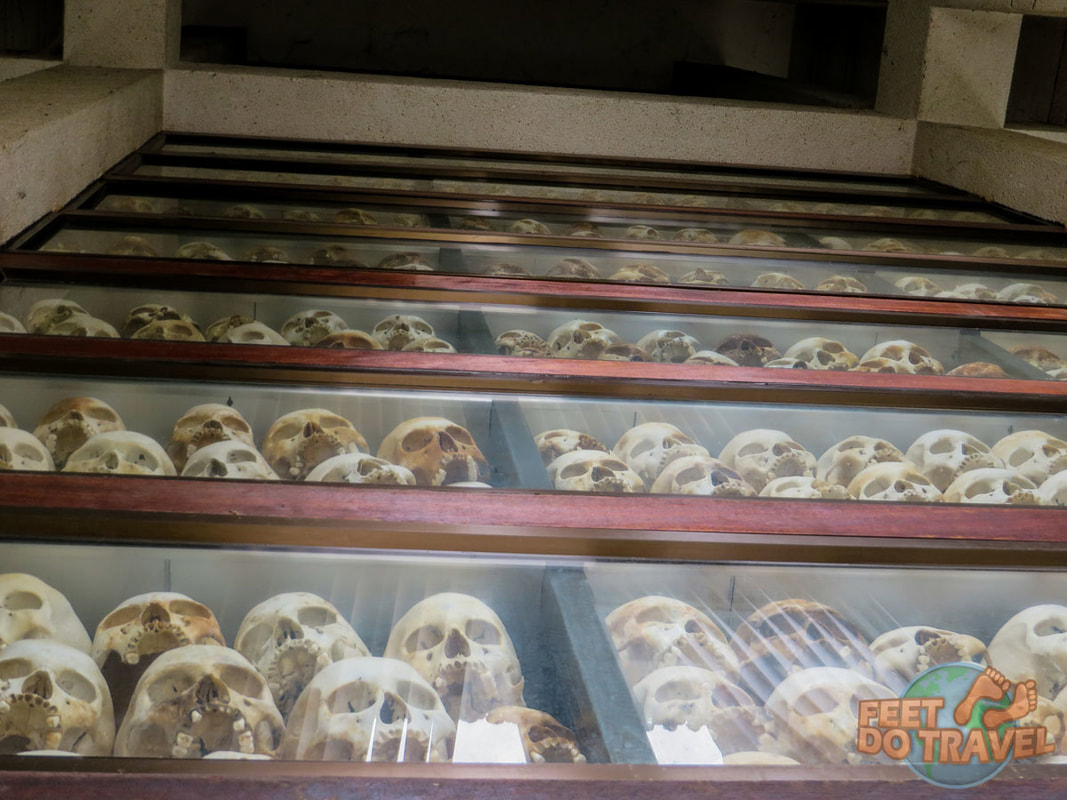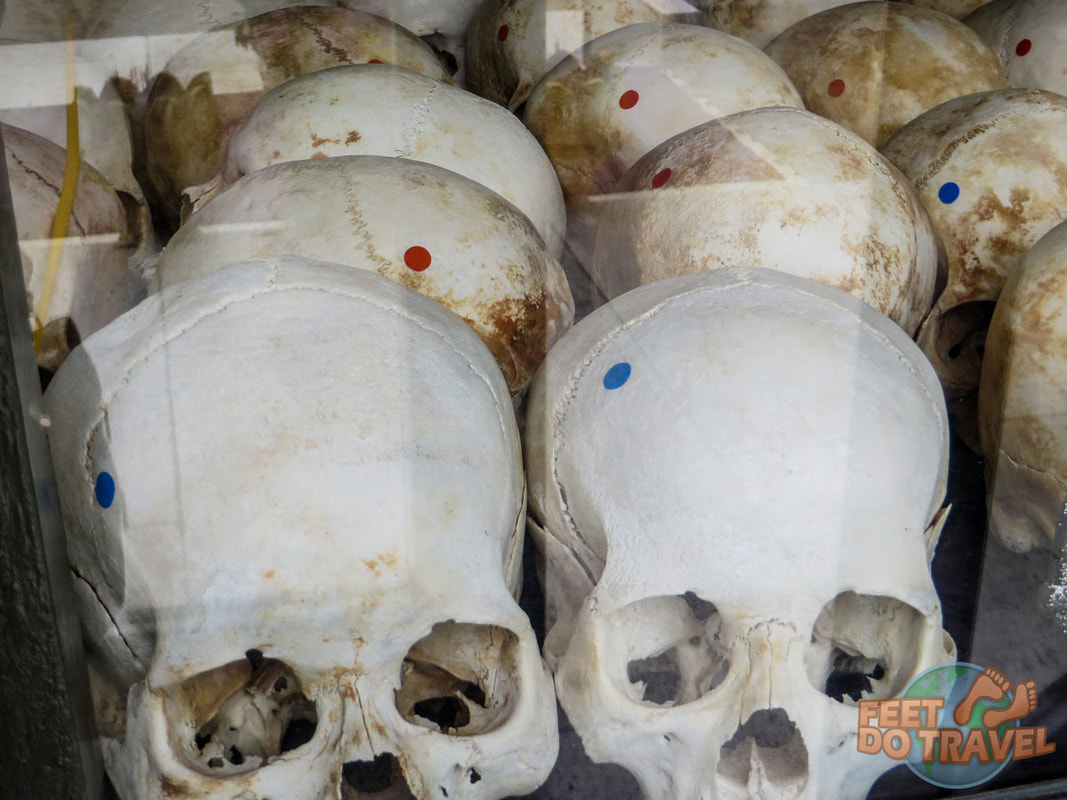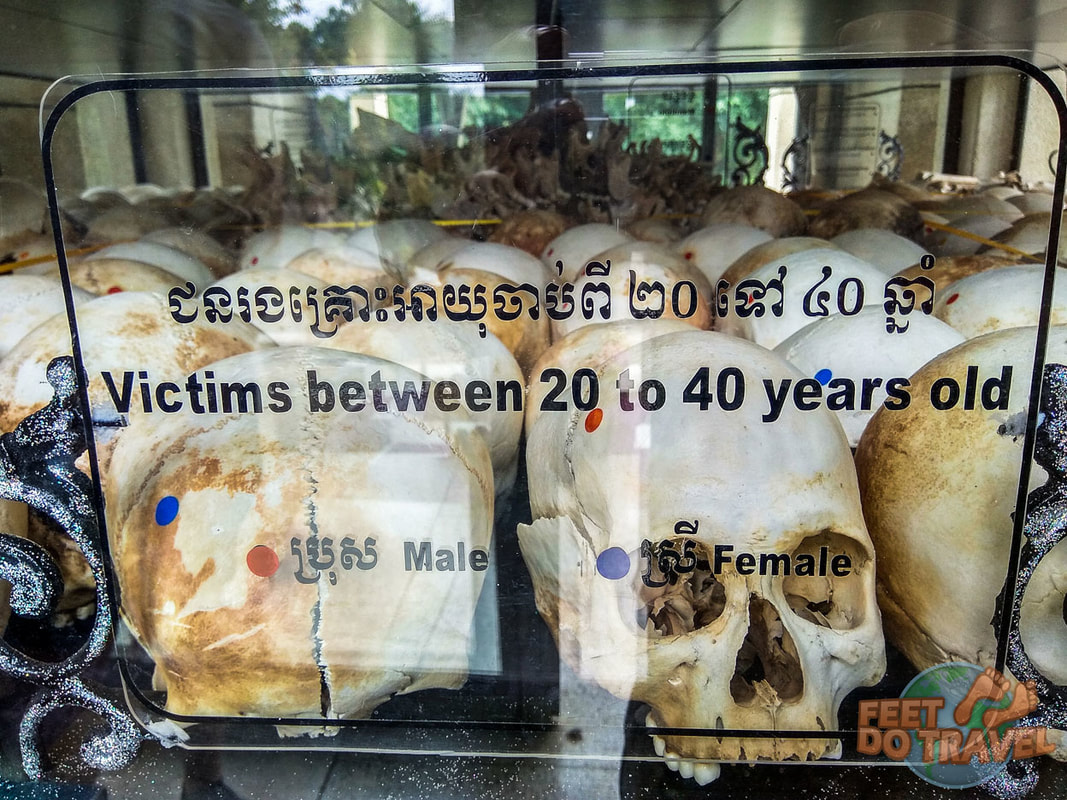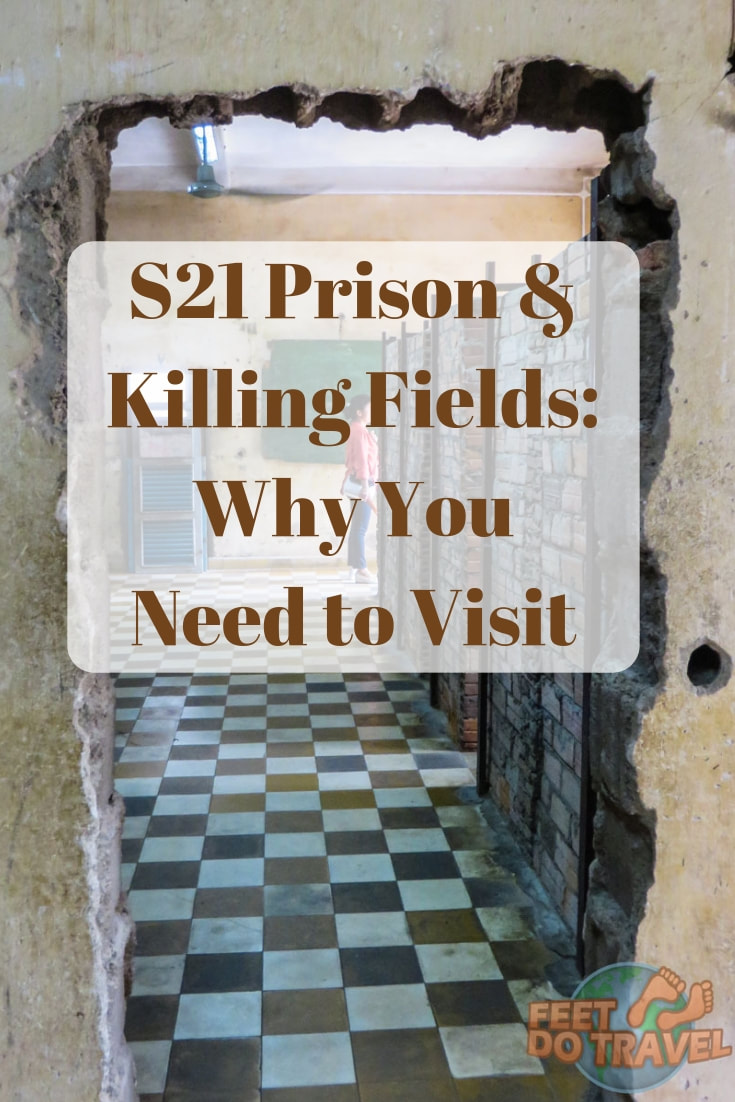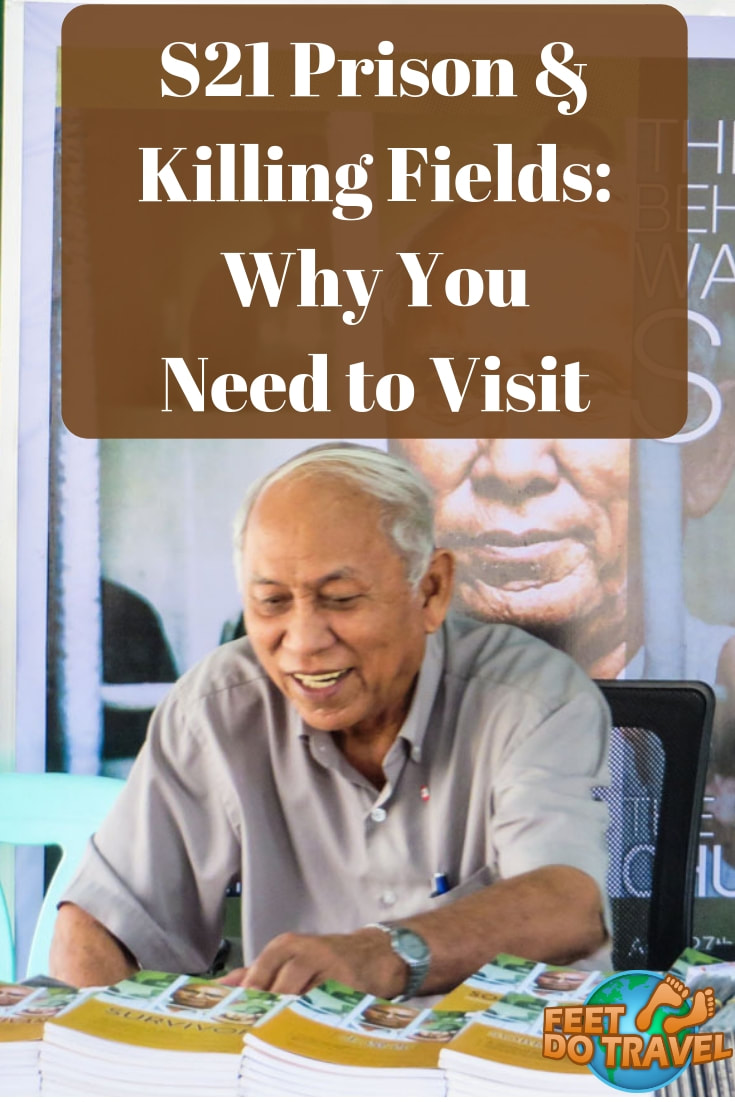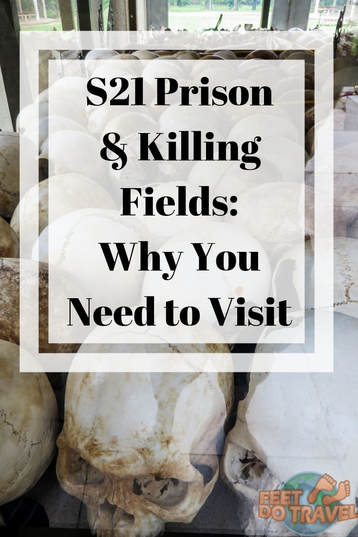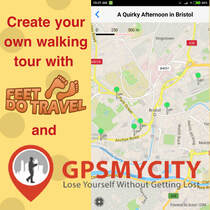A trip to Cambodia’s S-21 prison (the Tuol Slengh Genocide Museum) and Choeung Ek Killing Fields in Phnom Penh will show you this history in graphic detail. It’s a harrowing experience, and one you shouldn’t shy away from. But why?
Why should you put yourself through a disturbing and emotionally difficult time? Let me be real, you won’t just be listening to horrific stories of mass torture carried out by the Khmer Rouge under Pol Pot’s command, you will see photographs of their pained, contorted faces after they died.
Why make yourself look at photos of victims, then stare at skulls piled thousands high, as tall as a building, knowing this could be the skull of someone you saw alive in a photo?
Why? Because the young survivors of the Cambodian genocide want their story to be told. They wish to educate the world about what happened to them, their families, and the country they love.
Why? In the hope that these atrocities, too vile to describe in too much detail, will never happen again.
Their suffering should never be repeated. The people of Cambodia never thought something like this could happen to them, and you need to learn so that this doesn’t happen to you.
There is currently an ongoing genocide in Myanmar which began on 25 August 2017.
What was the Cambodian Genocide?
The Cambodian Genocide took place between 1975-1979 by a political party named The Khmer Rouge, their leader was Pol Pot.
They led a four year reign of terror in Democratic Kampuchea, the name for Cambodia during the regime. Throughout the country, the Khmer Rouge made 167 prisons in which they tortured millions of people. In the 343 killing fields, a quarter of Cambodia’s population were murdered (nearly 3 million people). The rest of the world didn't know what was happening in Cambodia, so no one did anything to help.
Although Cambodians survived the regime, they continue to suffer in so many ways, ways we cannot even begin to imagine or understand.
There is a generational split in how Cambodian’s wish to recall these events. The older generation, the adults who lived through the regime wish to forget and move on. The child survivors want to educate the world about what happened, maybe they have less vivid memories or perhaps saw less, we can only hope this is true for their sake.
Cambodia’s borders were peppered with millions of landmines which were scattered throughout the land, this meant the country was closed to foreigners. If no one was allowed into Cambodia, no one knew what was happening, so no one came to help them. Cambodia had suffered years of war with Vietnam who bombed them, Vietnam’s US allies dropped 2.6 million tonnes of bombs across the country. Cambodia wasn't considered a safe place to be.
No one knew who the leaders of the Khmer Rouge were during the regime, their identities remained confidential and Pol Pot would continuously change his name to confuse his enemies. It wasn’t until decades later in 1977 that the world discovered who controlled the party; Pol Pot and his brother-in-law Leng Sary.
It wasn’t until 1984 that the plight of Cambodian’s was truly brought to the world’s attention following release of the British movie “Killing Fields”. It won many awards and much critical acclaim.
To understand what Cambodian’s have lived through, you need to look at its political history, which is confusing and complicated. Alliances would change leaving its people uncertain for their future. Cambodia has also held many different names for the country, it is currently The Kingdom of Cambodia but between 1976 – 1982, the Khmer Rouge changed it to Democratic Kampuchea. Kampuchea means Cambodia in the Khmer language.
1813 – 1834 – King Nak Ong Chan gained the Cambodian throne with Vietnam’s help
1834 – 1863 – Following the King’s death, Vietnam colonised Cambodia
1863–1941 – They were under the French Protectorate, to stop Thailand (then Siam) and Vietnam, from swallowing Cambodia
1941 – 1945 – Under Japanese occupation
1945 – 1953 – Under the French Protectorate
1955 – 1975 – Vietnam War, also known as the Indochina War or the American War
1975 – 1979 – Khmer Rouge regime
1978 – 1989 – Cambodia and Vietnam War
1979 – 1993 – Vietnamese occupation
1993 – present – Kingdom of Cambodia
The Khmer Rouge spoke of a better Cambodia, a united country, Cambodians looking after Cambodians not a foreign country such as France, America, Japan or Vietnam. At the beginning, some people supported the Khmer Rouge for these reasons. Fed up with years of uncertainty, pounded by bombs from decades of ongoing war, the Khmer Rouge promised stability and on the face of it, it’s understandable.
Yes, Pol Pot was an extremist beyond all comprehension, but he appealed to people who were traumatised. They just wanted their country back and that is what the Khmer Rouge initially promised.
Who was Pol Pot and the Khmer Rouge?
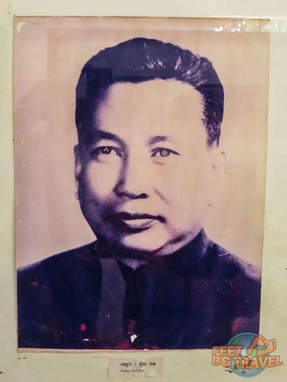 Pol Pot, the leader of the Khmer Rouge responsible for the Cambodian Genocide
Pol Pot, the leader of the Khmer Rouge responsible for the Cambodian Genocide
He was educated at some of Cambodia’s elite schools and was an intelligent man listening intently to teachers and professors during his education. Under his regime, he would kill these same people as he was paranoid, he didn’t want anyone alive whom he considered more intelligent than him.
Peasants were his heroes, and it was farmers, boys and teenagers he appealed to, recruiting them for his army with promises of a better life, a steady job and equality.
Pol Pot joined the Communist Party Khmer Rouge, which was founded on the policies of Maoism. The Khmer Rouge Party translated means “Red Khmer”, the word red stood for communism. He later became its leader, and eventually the Prime Minister of Democratic Kampuchea taking his country to war with Vietnam. He idolised Chairman Mao, and used Vladimir Lenin in his quotes.
His vision was to create “a new Cambodia” where everyone was equal. No rich, no poor, no one was better than anyone. He wanted a pure communal self-sufficient society. If you have read George Orwell’s “Animal Farm” you can already see the parallels.
During the Vietnam War (also known as the American war), the Khmer Rouge and Vietnam were allies against America. The Khmer Rouge became paranoid that Vietnam would try to colonise Cambodia as it did in the 1830’s when they attempted to erase Khmer culture, so turned on the Vietnamese purging them by dropping bombs.
On 17 April 1975, the Khmer Rouge marched through Cambodia’s capital Phnom Penh ordering people to leave their homes. They said America planned to bomb the City, but told them they could return to the City in three days’ time. Everyone packed essentials believing their fellow countrymen. A 13 year old boy took with him a couple of clothes, a fairytale book and a bicycle.
Within 48 hours everything in the capital was closed including schools and hospitals. Families were split and sent in different directions. Everyone was forced to leave.
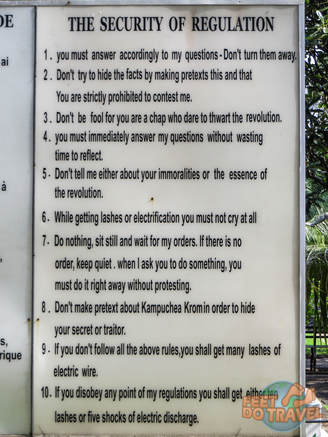 Prisoner's rules at S-21 Prison
Prisoner's rules at S-21 Prison
An excellent movie to watch which shows the beginning of the regime from a survivor’s perspective, is “But First They Killed My Father” directed by Angelina Jolie.
- People were forced to work sowing rice, however any harvests were taken away from them causing wide spread starvation. They were told the food was for front line fighters, they need it more than you. Most people died of starvation but that was part of the plan. Starvation and malnutrition was cheap and easy.
- Orphans were trained as child soldiers, taught how to use guns, how to fight, to crush Vietnam, their enemy. They were made to plant landmines, thousands and thousands which lay like a ticking time-bombs when the war later finished.
- Anyone they thought were against the regime, or were thought to know people who opposed it were put into prison, tortured and starved.
- High ranking officials were interrogated over and over, day after day. Some died, others were taken to the killing fields.
- Pol Pot killed anyone he believed to be cleverer than him. If you looked intelligent, wore glasses, spoke another language, were a classical or popular singer, you would be put to death. Prisoners’ hands would be checked, if they were soft it would be assumed they were intelligent and sent to the Killing Fields. His paranoia knew no bounds, he even killed members of his own family. Towards the end of the revolution, paranoia was rife and people within the regime started to turn on each other.
Our visit to the Museum and the Killing Fields
Tuol Slengh Museum – S-21 Prison (Security Office 21)
Entrance Fee: $5, if you want a guide you make a donation, $8 with audio
When you enter S-21 you are given a choice, to either walk around alone, have an audio tour or a tour guide. We opted for the latter to humanise the experience.
Our guide introduced herself and told how she fled to Vietnam when she was nine years old. She knew that her father, sister and mother were all killed in Cambodia, but she doesn’t know how or when.
There were many like this throughout the Country, five in Phenom Penh alone, S-21 was the largest. It also holds the most complete information regarding its inmates, as Duch (the commander in charge) failed to destroy all records.
Once a safe place for a child’s education where children’s laughter could be heard, during the regime only screams of agony filled the classrooms. Out of the five schools, this High School was kept as a museum educating the world what had happened here, the other four were turned back into schools a few years ago.
As you enter the complex, you are faced with 14 graves. These are the people who were found dead at S-21 after the liberation. They were high ranking officials, and are buried here as a reminder.
Chum Mey was 45 when he was captured, and survived two years of torture. His life was only spared because of his high level of competence in machine repairing for Pol Pot’s soldiers. He witnessed the murder of his wife and child who were shot in front of him.
Bou Meng was 35 when he was arrested in 1976 with his wife, according to prison records, she was tortured and killed in August 1977.
For the 20,000 other prisoners brought to S-21 the end result was always the same: death.
There are four different buildings, 300 guards and interrogation officers worked here. Building A has 20 cells, the first 10 cells were used for jailing, interrogation and torture of high government officials, including people from their own regime who they later didn’t trust, through paranoia, they began to turn on one another.
Prisoners were held here for three months. Some slashed their own wrists with a spoon, suicide was a better option than faced with a future of daily torture and starvation. Prisoners were not allowed to talk to one another. They showered once or twice a month by a hose which was pushed through a window spraying them like animals.
Walking between Building A and B we passed the gallows. Prisoners were hung here upside down with their wrists tied behind their back. They would remain this way until they lost consciousness, then they would be lowered until their heads were dipped into a large, filthy, smelly jar of water used for fertilising crops. After they regained consciousness, interrogation would continue.
Building B was where the majority of prisoners were held. These classrooms were divided into tiny brick rooms which held several people in cramped, uncomfortable cells.
Prisoners were given a number and their photo taken. There were many photos of victims with the same number which were purely to serve a purpose. Once number 10 was dead, the number was free to be used again.
There were many torture implements on display, and paintings on the wall showing how they were used. All paintings around the museum were by survivor Vann Nath (he died September 2011). Vann was one of the seven adult survivors, he was only spared so that he could paint and sculpt portraits of Pol Pot. Vann painted the horrors in detail to show people through his art what the victims had endured.
It was a sobering reminder of what humans will do to one another, and what atrocities can happen behind closed doors.
If I felt that way, I can’t even begin to get my head around what our guide had to go through. Hour after hour, day after day bringing tourists like me through these rooms of horror. Re-telling stories of torture, knowing that she maybe telling the story of her own family.
Building D
This building housed skulls and clothes of the victims. There are more paintings by Vann Nath depicting what happened at the Killing Fields.
One thing is certain, we will never forget this experience, and we still had the horror of the Killing Fields to visit.
When leaving the museum, we needed some composure time before travelling to the Killing Fields.
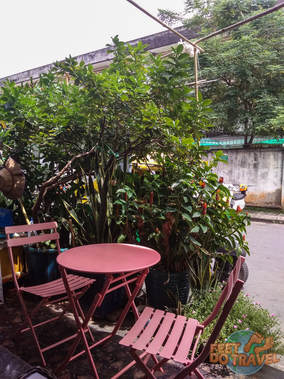 View of S-21 Prison from the coffee shop where we sat for a few minutes after our visit
View of S-21 Prison from the coffee shop where we sat for a few minutes after our visit
Catching a taxi from S-21 to the killing Fields, we took the same route thousands of prisoners would have used. For the 30-minute trip, we looked around at the sights, the prisoners taken on this journey would have been blindfolded and scared, unsure of their fate. They were told they were being moved to a new place to keep everyone calm during the bumpy journey.
No one knew the truth of where they were going, or what would happen next, although some I’m sure suspected.
15km south-west of S-21, Khan Dangkor District
Entrance Fee: $6 inc audio tour
There were over 300 Killing Fields around Cambodia. Duche (the commander in charge of S-21) feared disease from the growing number of prisoners being buried at S-21, so chose Choeung Ek because it was out of the way, and already been used as a grave for the Chinese.
Victims were taken from S-21 Prison to the Killing Fields at night. Arms cuffed behind their back, blindfolded, beaten, tortured, starved.
It is thought that some people were relieved at the thought of death. They had suffered enough.
Each morning, a messenger was sent to inform the guards how many people were coming so they could dig the appropriate sized graves. When a truck full of people arrived that evening in the dark, executioners were waiting by the graves. The lights were turned on and prisoners were asked to kneel down in front of the pit.
Music was played to cover up any pleas or screams from prisons about to be killed. The music chosen gave the impression to the outside world that this was a Khmer Rouge meeting.
Kill or be killed. If soldiers didn't do as they were told, they were traitors of the revolution.
We listened to survivor stories told over 30 years later by people still traumatised, still having nightmares. We heard how people were forced to eat excrement, to beat children and were then beaten themselves, family members were murdered in front of them. Mother's lost infants only a few months old as they didn't have enough food inside them to continue breast feeding.
The most horrific stories were still to come. A farmer was digging for potatoes and uncovered a mass grave. When he looked around, he saw a tree covered with hair, brain and blood stains.
This tree was used to kill babes in front of their mothers. Their heads were smashed against the tree and tossed into the pit. Women were stripped naked and thrown in, many had been raped. One grave held more than 100 women and children.
I knew this tour would be confronting, but this was another level.
On 7 Jan 1979, Cambodia was liberated by Vietnam. They launched a full-scale invasion lasting two weeks and 150,000 troops overran the Kampuchean army. This started a 10 year Vietnamese occupation. Victims of the regime were freed by their enemies, with whom they had been at war for many years, and were still fighting.
Families were partly reunited as they discovered who had survived and who hadn’t. Brothers lost sisters, children lost mothers and fathers. 1 out of 4 people were killed - Cambodia literally lost a quarter of its population.
The new government wanted to know how many bodies were in a single grave, so when they were excavated, they took a photograph of all the skulls.
Pol Pot and the Khmer Rouge fled to Thailand, where they lived in exile. It is believed that 30,000 – 35,000 troops re-grouped here and were protected by powerful foreign connections. Inside their Thai refugee camps, an abundant supply of military equipment was sent by China and America.
Pol Pot continued as the leader of the Khmer Rouge for almost 20 years, he even married a second wife and fathered children. In 1997 he was denounced as the leader and placed under house arrest in the jungle, however one year later he died of natural causes aged 73 in April 1998. He was hastily cremated in a pile of old tyres and rubbish, an inglorious end to someone who left a nation traumatised and in tatters ruining the lives of millions. His death denied Cambodians the justice they deserved.
The first was “Duch” in 2010, the man responsible for running S21 Prison. He was jailed for 35 years but appealed in 2011 stating he was a junior official following orders. The Judge overturned the appeal and his term increased to life.
The second and third convictions were on 7 August 2014. Nuon Chea, who considered to be Pol Pot’s “number 2” and Khieu Samphan, the regime’s head of state.
In November 2018 the tribunal also found the men guilty of genocide.
Dots on each skull give us more information about who it beloved to. A blue dot for female, red dot male, victims under 20, over 60 etc. Coloured dots indicate evidence of how they were killed.
Every 20th May a commemoration ceremony takes place here as a Day of Remembrance.
Leaving the Killing Fields
In the tuk tuk back to our hostel, we were all silent. What was there to say? We had so many thoughts, but talking was beyond us. We had a headache from hours of frowning. We shared the tuk tuk with a friend who nodded off; in a bumpy tuk-tuk through noisy traffic, how is that possible? Because that morning we were emotionally drained and we were all exhausted.
That evening, we didn’t want to go anywhere or do anything. We ate dinner, Sy had a couple of beers to try to relax, but my headache intensified all around my head. Although we had walked away from these harrowing sites, we weren’t going to forget what we had seen and heard, not for a long time, probably never.
Questions and thoughts crept into our head, we struggled to comprehend what had happened here.
Cambodia wasn’t the only genocide in recent history. China under Mao, Russia under Stalin. I finished off my blog post on Auschwitz, the story of the Nazi’s genocide of the Jews stating we should never let this happen again. But it did happen again in Cambodia and again in 2012 in Rwanda. Whilst you are reading this post about genocide, it is happening right now in Myanmar.
How many more times will we keep saying “we must never let this happen again”.
Have you been to the S-21 Prison and the Killing Fields? If you would like to share your thoughts in the comments below, we would love to hear them.


the importance of visiting
Travelling around Cambodia and Asia? Hope these related links help!
Street Art in Phnom Penh
Best Rooftop Bars in Siem Reap
Siem Reap Pagoda Cats - Better than any Cat Cafe
Why You Should Visit Chiang Rai
Elephant Valley Thailand: Where Elephants Come First
My Chaing Mai
Ping Pong at Patpong: Sex Tourism or Sexy Show?
It's A Monk's Life (Interview With Buddhist Monks)
Songkran; "Soaking" up the Atmosphere
Penang: City of Surprises
Critters & Caves at Mulu National Park
20 Free Things To Do in Singapore
Singapore with a Twist: Unusual Things to Do in Singapore
Brunei: The Green Heart of Borneo
Brunei Jungle - Primary Rainforest Paradise
8 Amazing Adventures in Borneo
Jewels of Java - Borobudur & Prambanan
Indonesian Orangutan Adventure
Tarsiers and a Monkey Selfie
Bali - Is Sanur Worth Visiting? You May be Surprised
Awesome Things to Do in Nusa Penida: Bali's Best Kept Secret
Lembongan - Bali but Better!
15 Things to Do in Canggu, Bali
The #FeetDoTravel blog link-up!
We are proud to host the #FeetDoTravel blog Linkup. If you have a blog post you would like to share, feel free to click on the picture below which will take you through to our Facebook Community and drop your link there. The link-up is open from Friday 12.00am (midnight UK time) and will close Sunday 12.00pm (midnight UK time). We are a fun and loyal group who are more than happy to comment, share and reciprocate! Happy Travelling Feet Fans!

